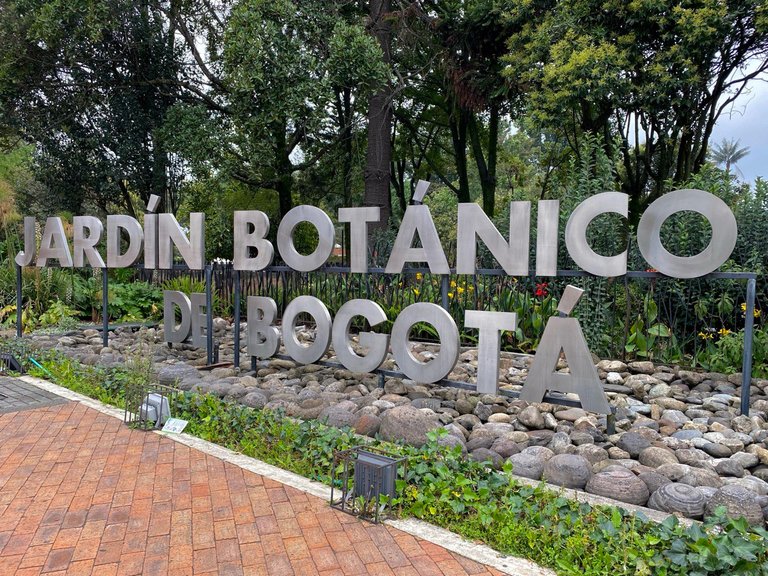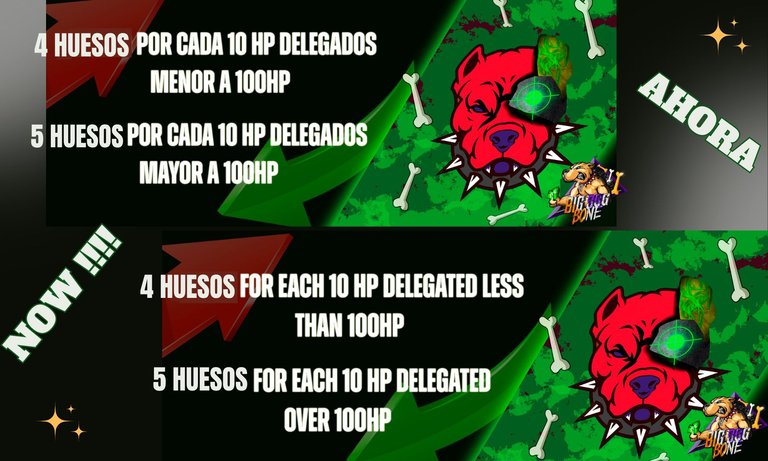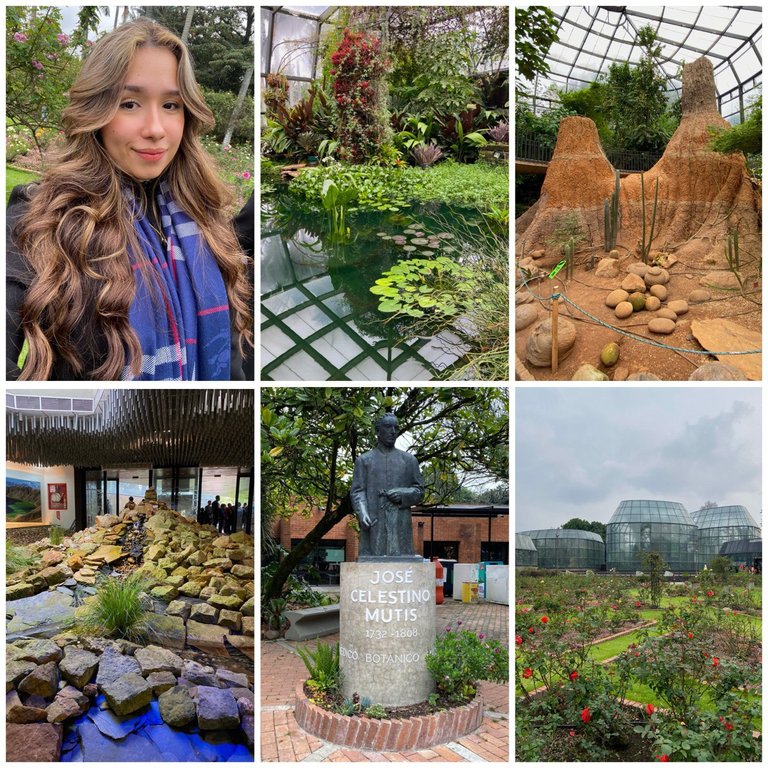
Hola amigos viajeros, feliz día! Espero que se encuentren genial y hayan tenido un excelente día. Por mi parte, bastante emocionada de traerles nuevamente una aventura por aquí. De hecho, me gusta cuando redacto algún post para esta comunidad ya que tengo la oportunidad de mostrarles los lindos sitios que visito en mis viajes.
Les cuento que hace unos días tuve la oportunidad de estar en la ciudad de Bogotá y aunque anteriormente les había hablado del cerro de Monserrate, tenía pendiente la visita al jardín botánico para contarles un poco sobre él, pero sobre todo, para compartirles hermosas fotografías de este lugar. Así que esta fue la ocasión perfecta para visitarlo, sin más por aquí les cuento mi experiencia.
Hello fellow travelers, happy day! I hope you are feeling great and have had a great day. For my part, I'm very excited to bring you again an adventure here. In fact, I like it when I write a post for this community because I have the opportunity to show you the beautiful places I visit in my travels.
I tell you that a few days ago I had the opportunity to be in the city of Bogota and although I had previously told you about the Monserrate hill, I had pending a visit to the botanical garden to tell you a little about it, but above all, to share with you beautiful pictures of this place. So this was the perfect occasion to visit it, without further ado I will tell you about my experience.

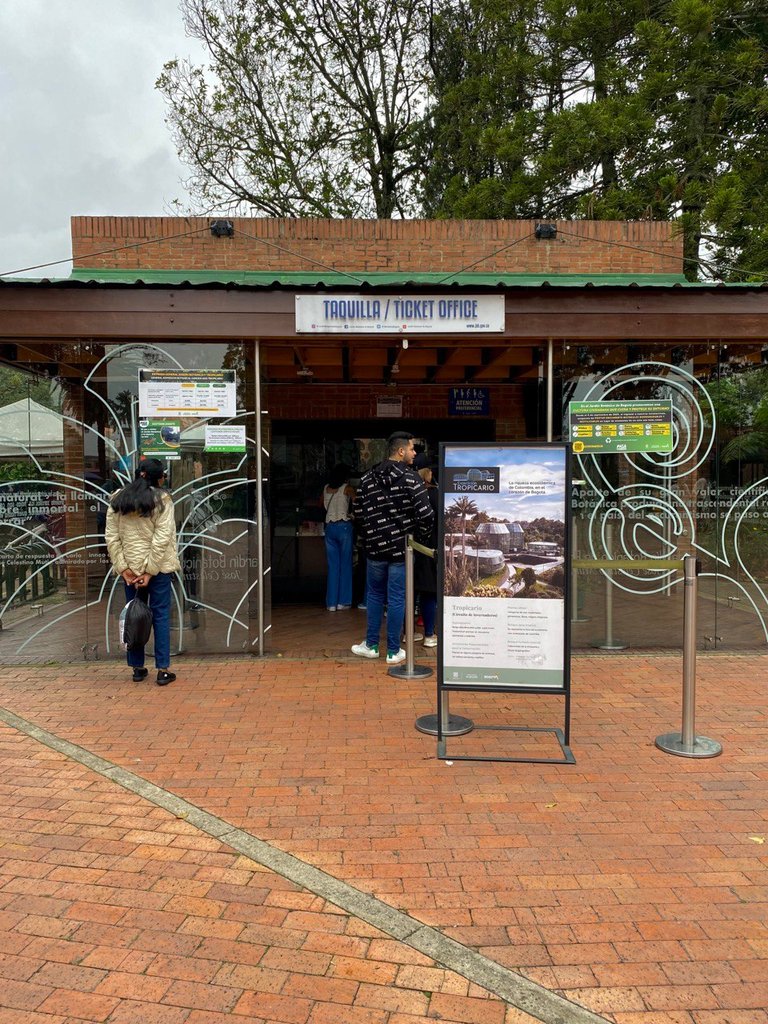
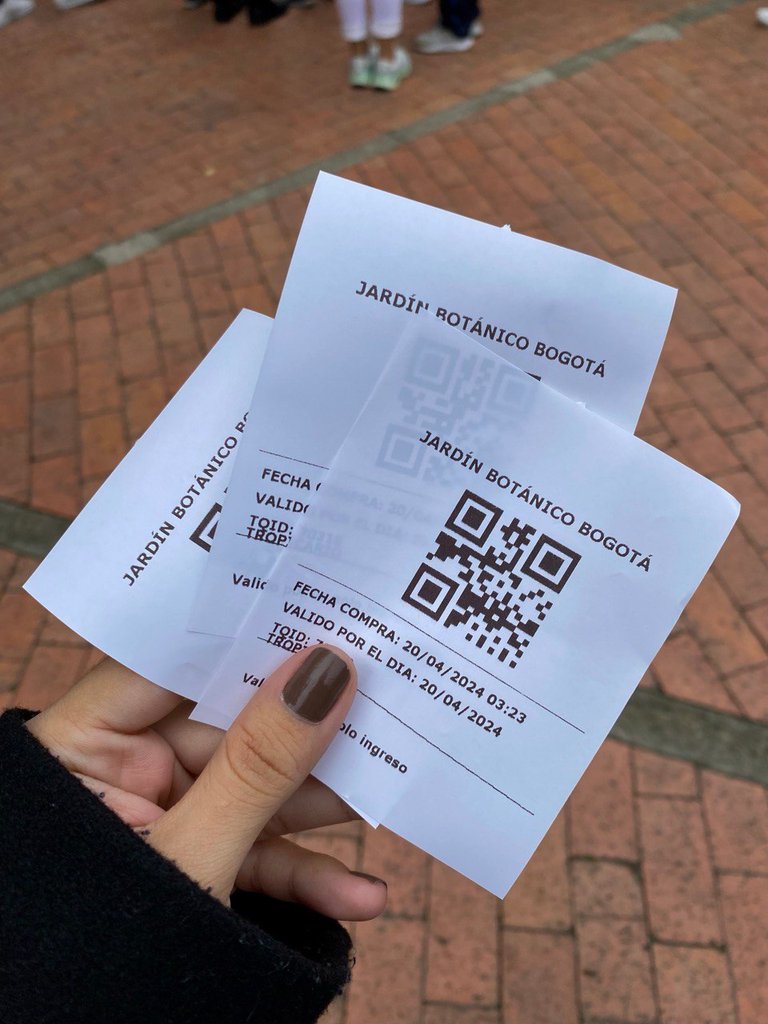
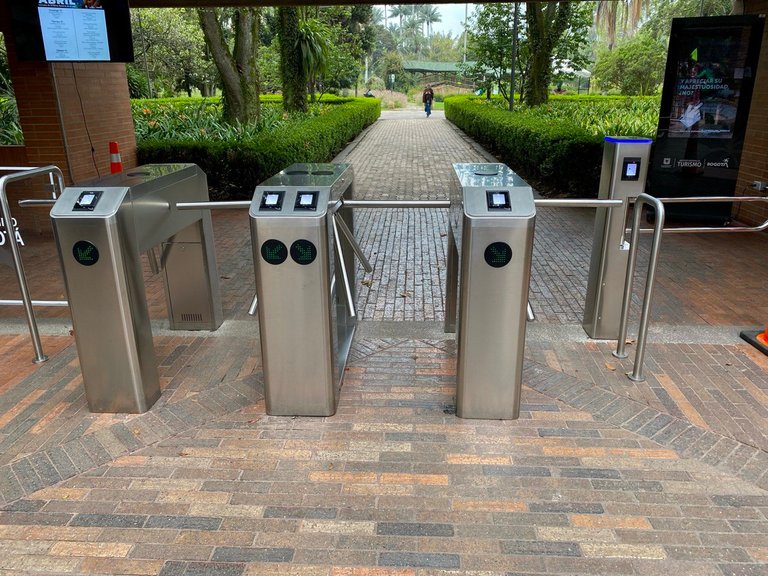

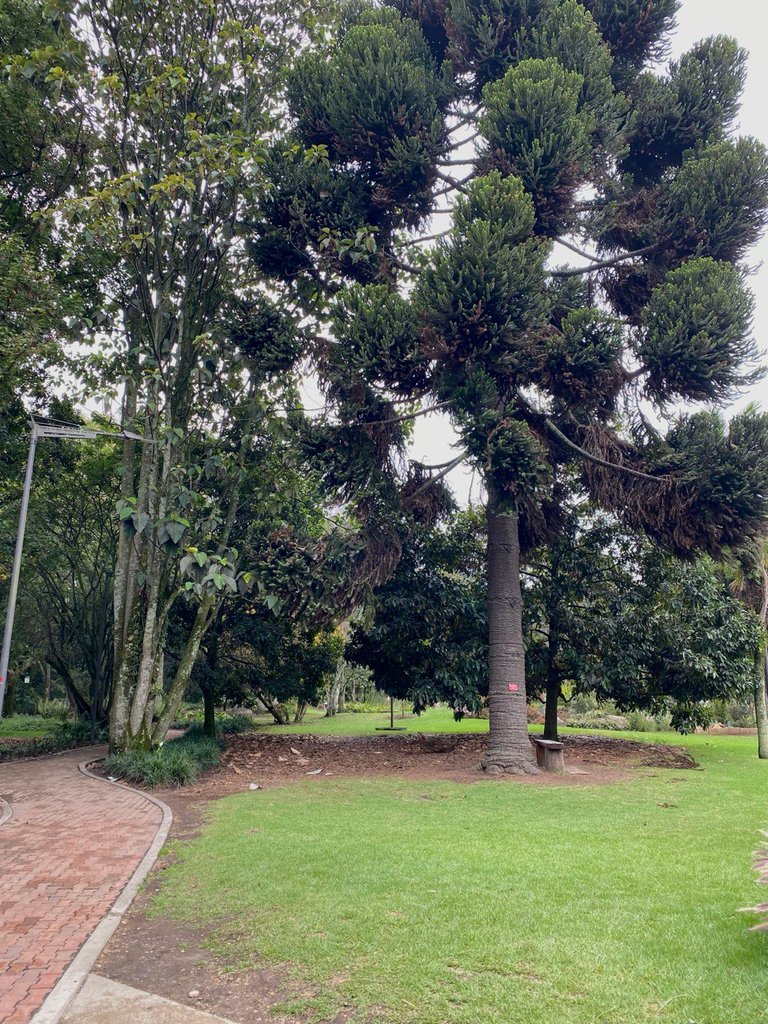

Antes de entrar al lugar tienes que pasar por la casetilla donde debes comprar las entradas, por lo general tienen un valor de $5.000 pesos Colombianos ($1.26 Dólares) pero como también quisimos hacer un recorrido por el tropicario para conocer más sobre los paramos y algunos ecosistemas de Colombia decidimos comprar la entrada a ambos lugares por un valor de $13.000 pesos Colombianos ($3.28 Dólares)
Contándoles un poco, el jardín botánico fue fundado en 1955 y lleva este nombre en honor al astrónomo y botánico José Celestino Mutis, se dice, que originalmente el lugar es un centro de investigación, conservación y divulgación de la diversidad de las especies vegetales que hay en Colombia.
Before entering the place you have to go through the booth where you must buy tickets, usually have a value of $5,000 Colombian pesos ($1.26 dollars) but as we also wanted to take a tour of the tropicarium to learn more about the paramos and some ecosystems of Colombia we decided to buy the entrance to both places for a value of $13,000 Colombian pesos ($3.28 dollars).
The botanical garden was founded in 1955 and is named in honor of the astronomer and botanist José Celestino Mutis, it is said that originally the place was a center for research, conservation and dissemination of the diversity of plant species in Colombia.

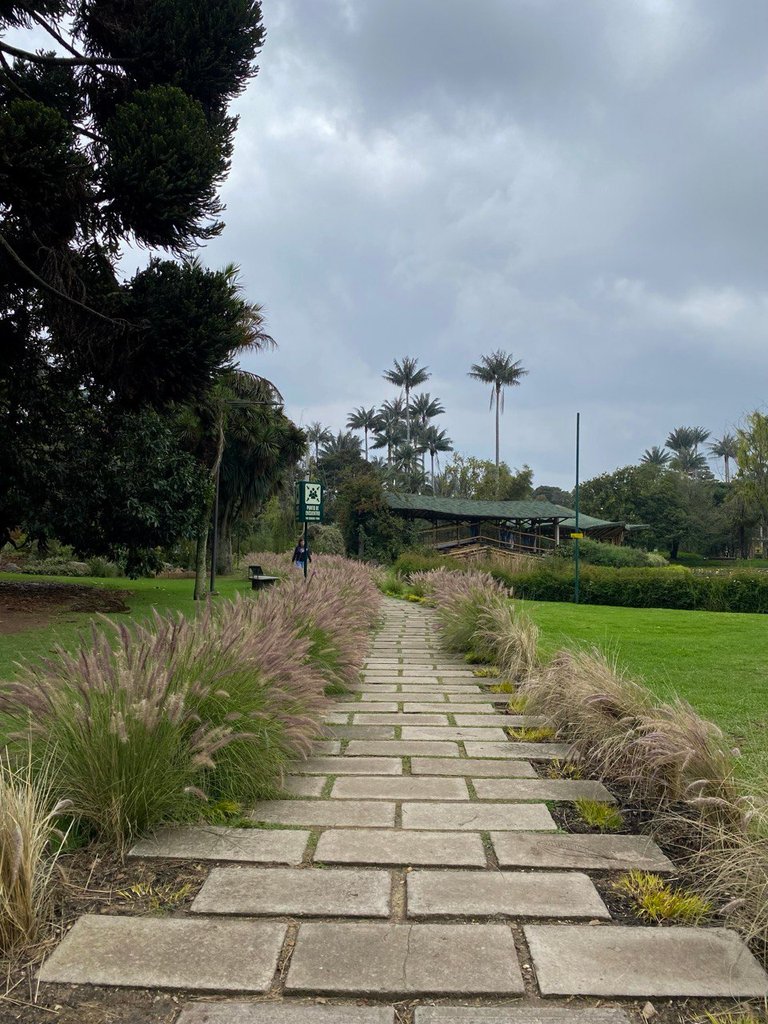
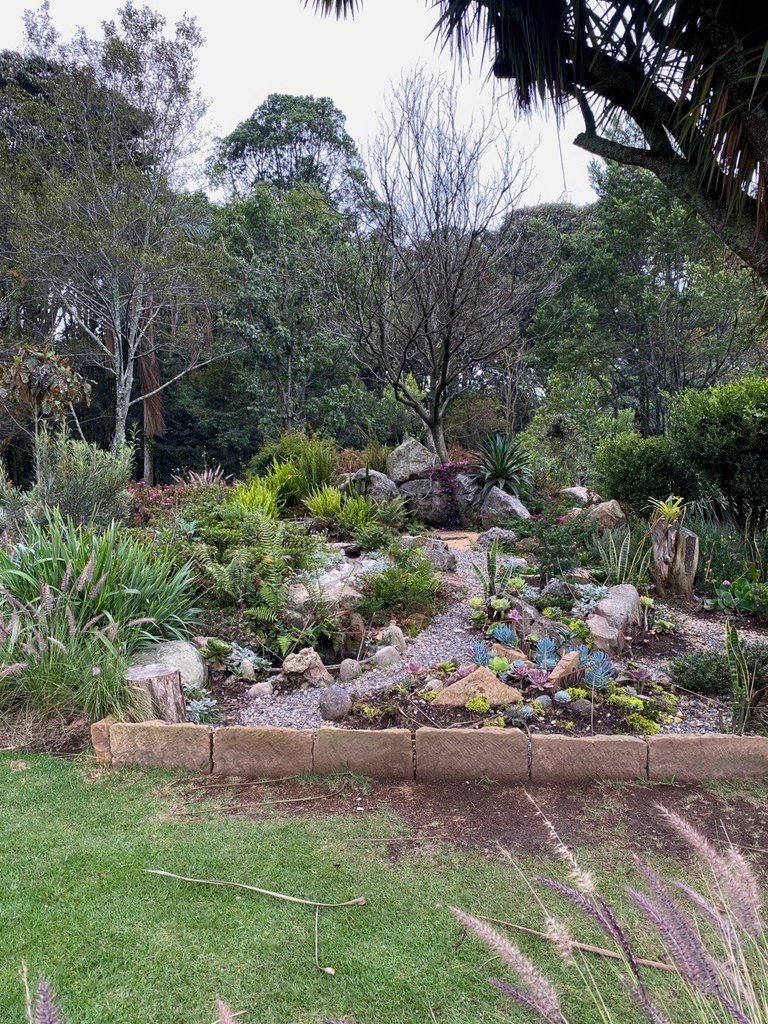
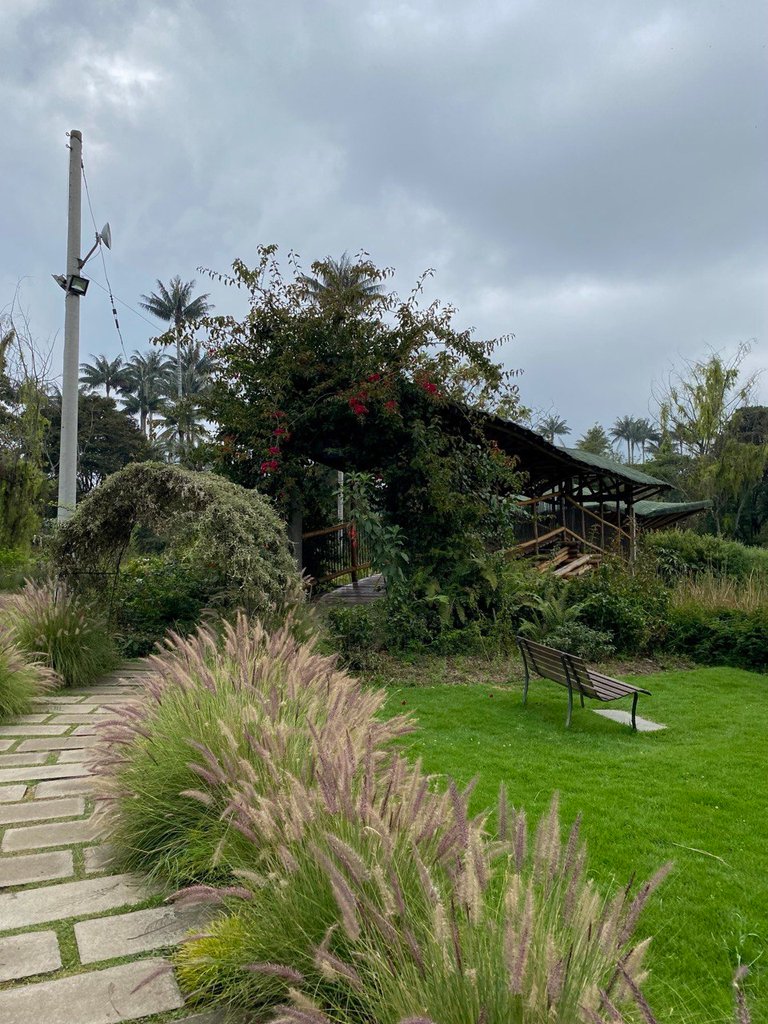
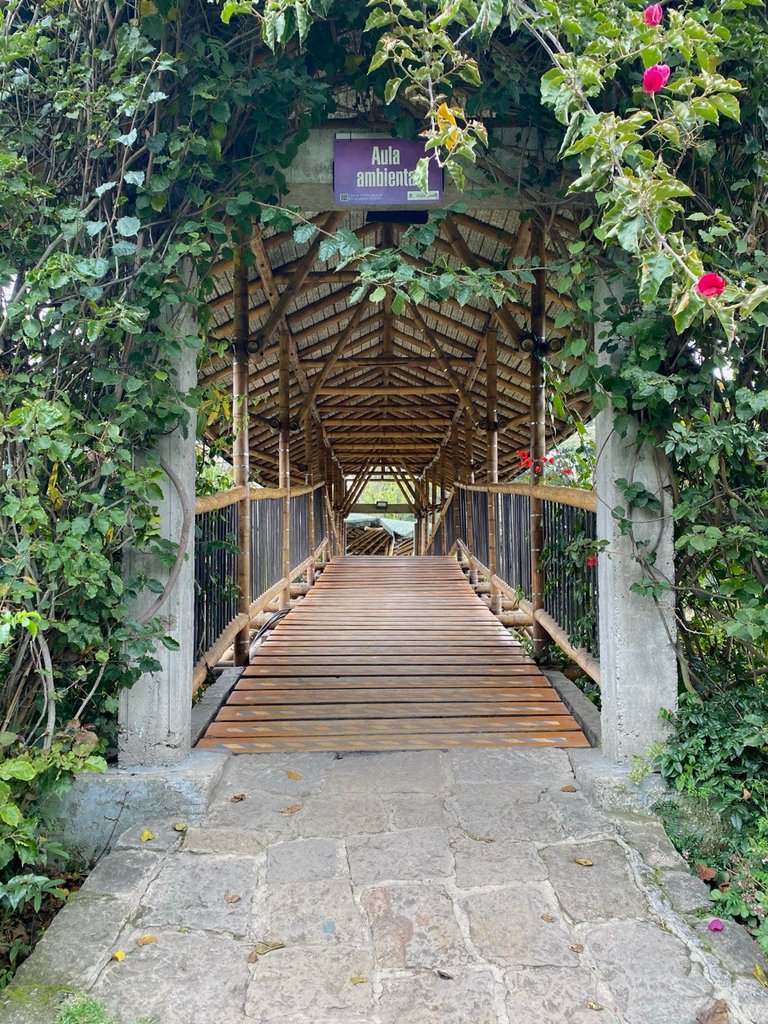
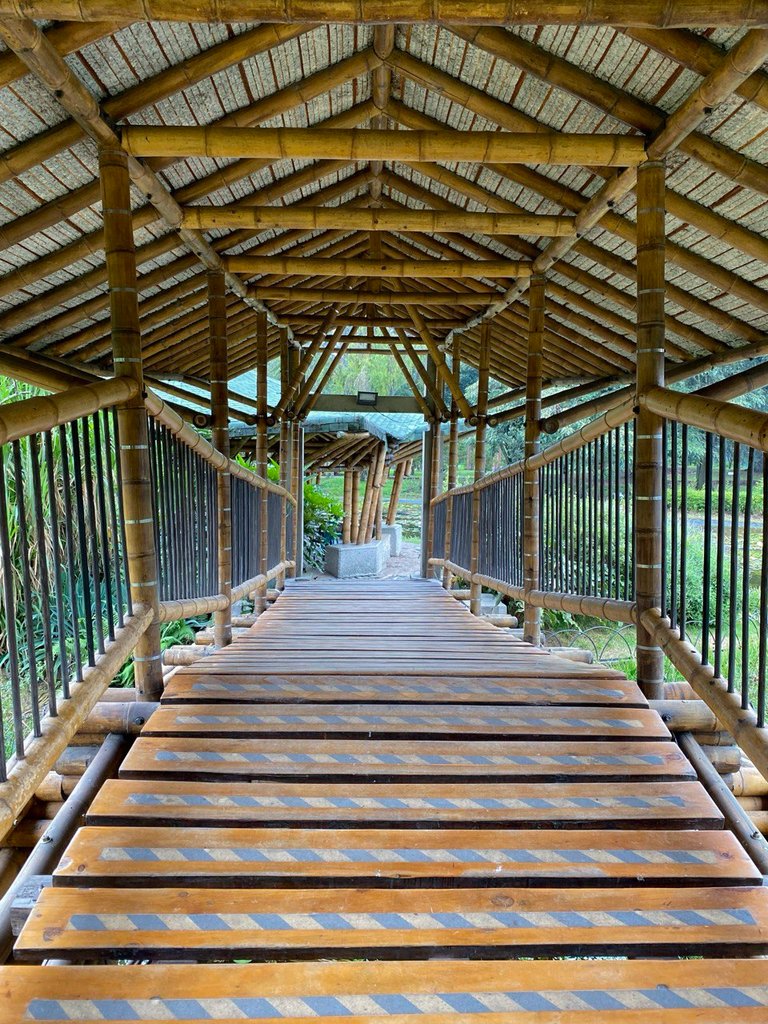
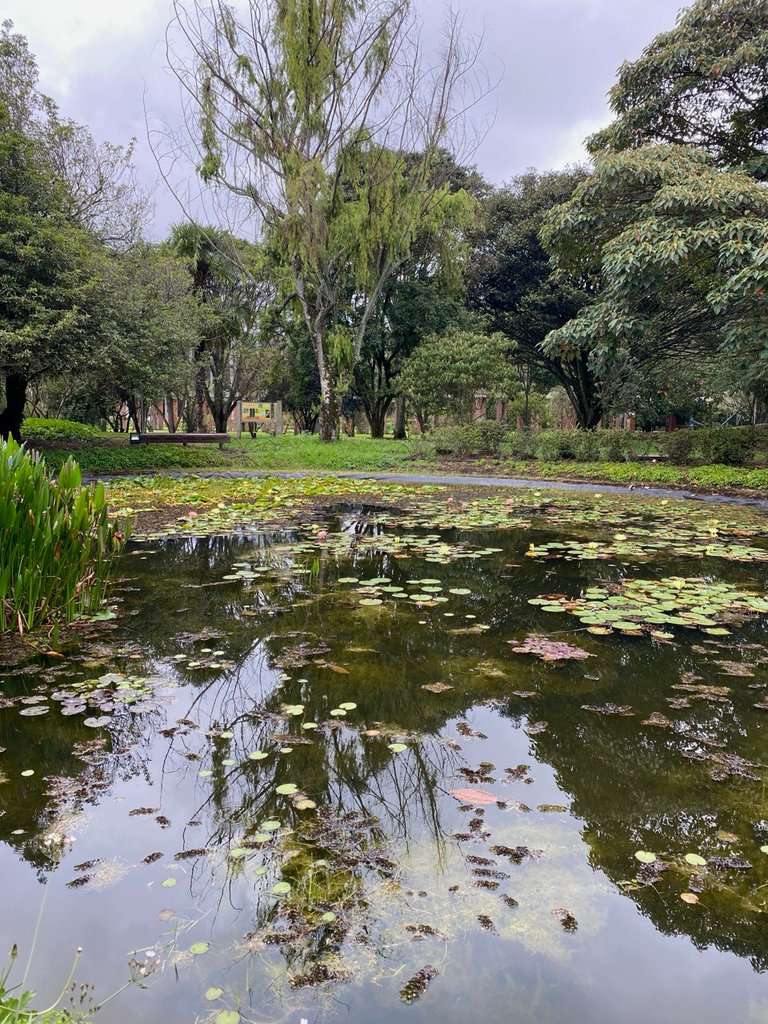
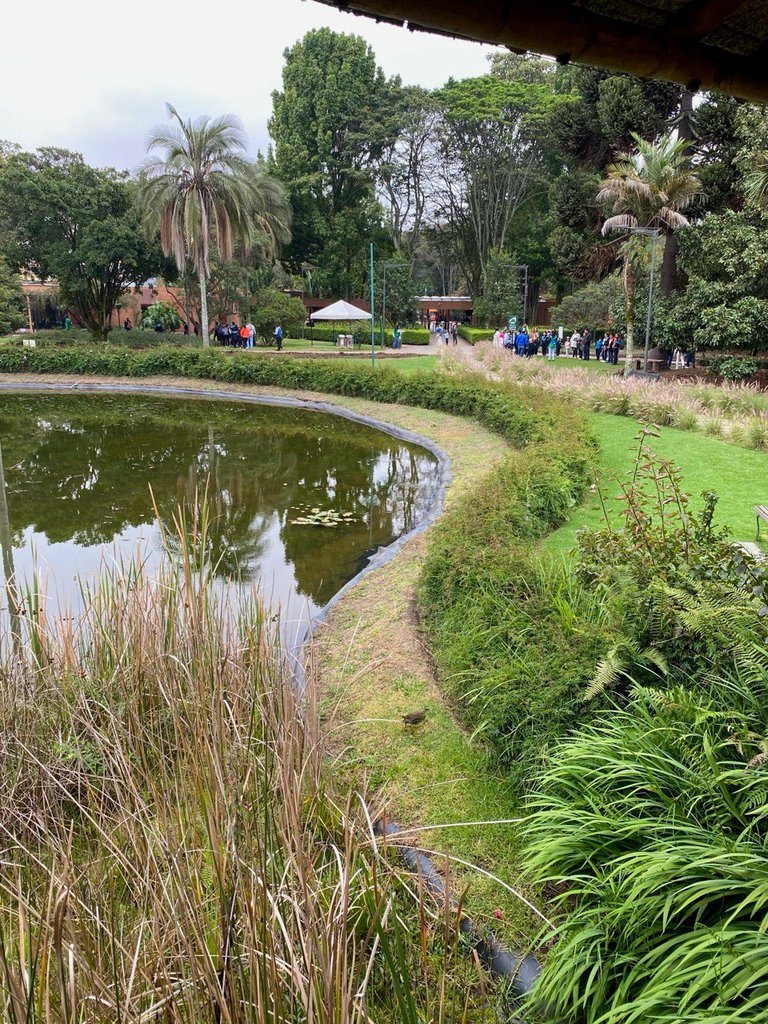
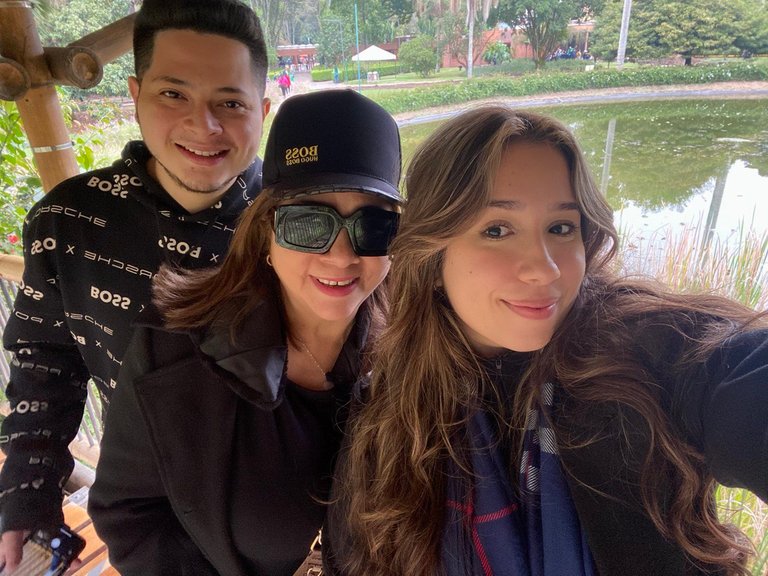

Lo que más me gustó de este jardín es que desde que entras te asombras con la cantidad de flores y vegetación que hay, nuestra primera parada fueron las palmas de cera que por lo general se encuentran en los bosques montañosos húmedos Andinos, estas pueden vivir más de cien años y sus frutos son consumidos por algunas aves.
Antes de darle un recorrido al parque como tal, decidimos visitar el tropicario ya que queríamos aprovechar la iluminación que había de momento.
What I liked most about this garden is that from the moment you enter you are amazed with the amount of flowers and vegetation, our first stop was the wax palms that are usually found in the Andean humid mountain forests, these can live more than a hundred years and their fruits are eaten by some birds.
Before giving a tour of the park as such, we decided to visit the tropicarium as we wanted to take advantage of the illumination that was available at the moment.


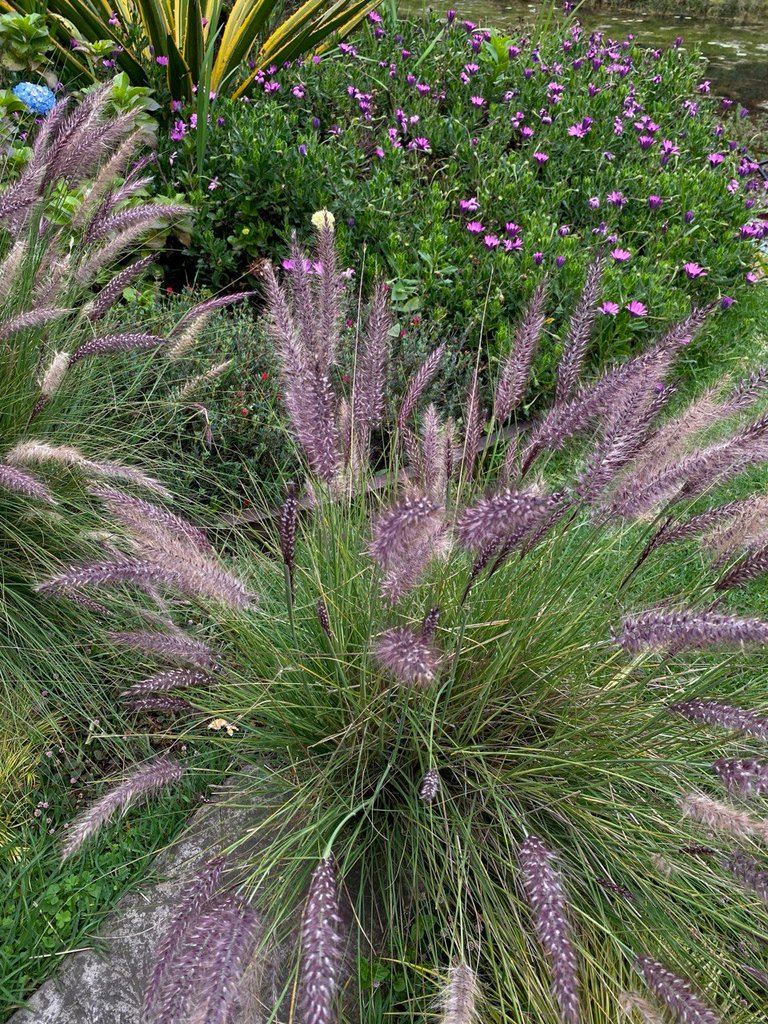
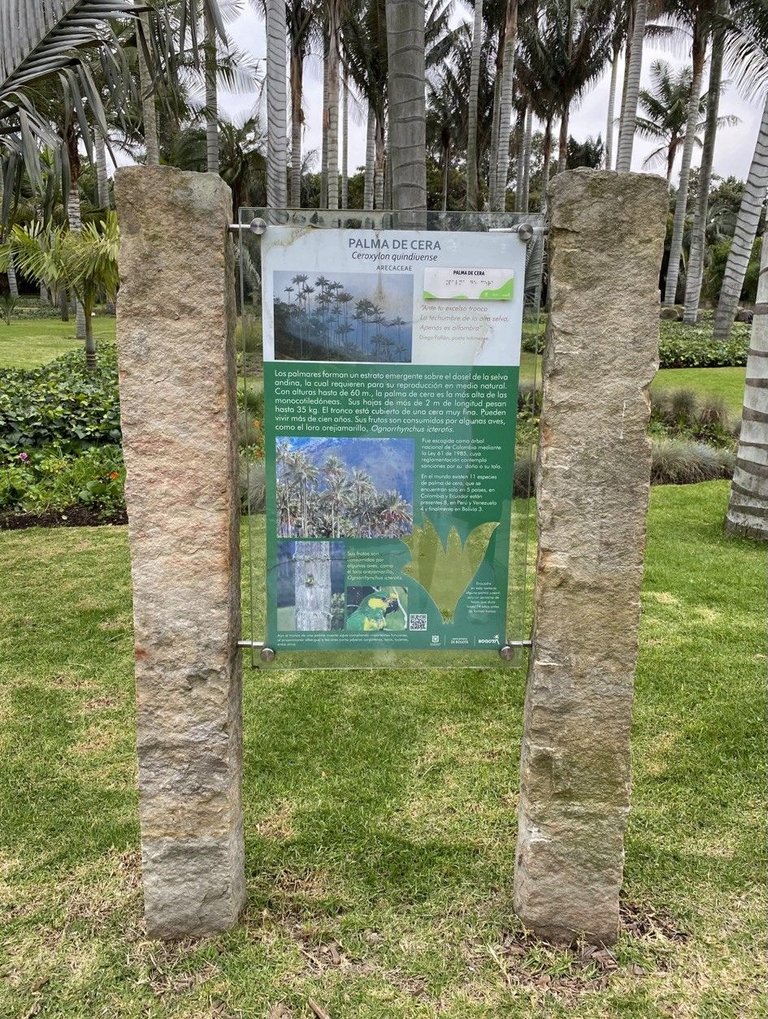
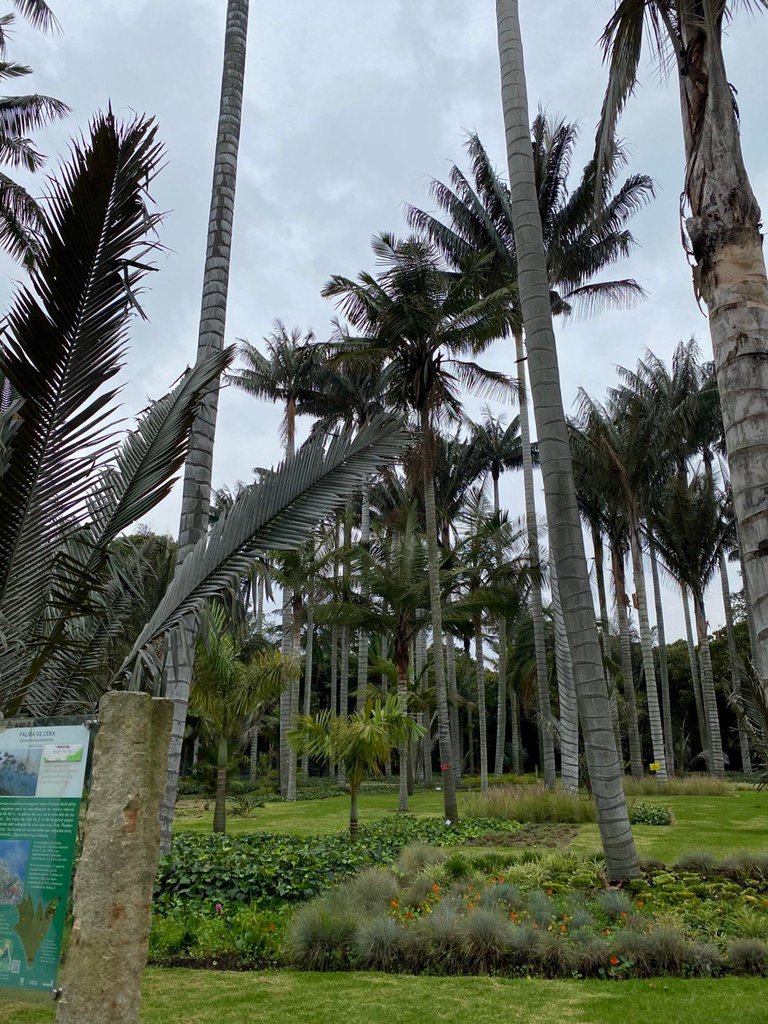
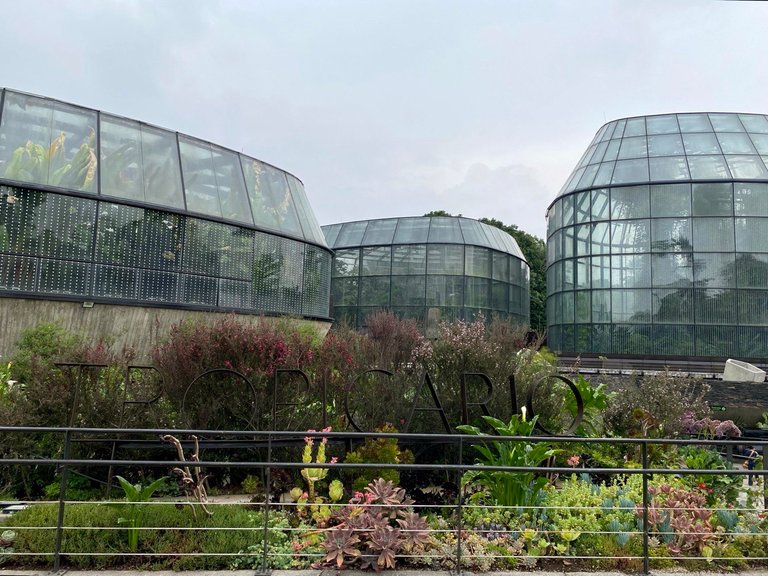
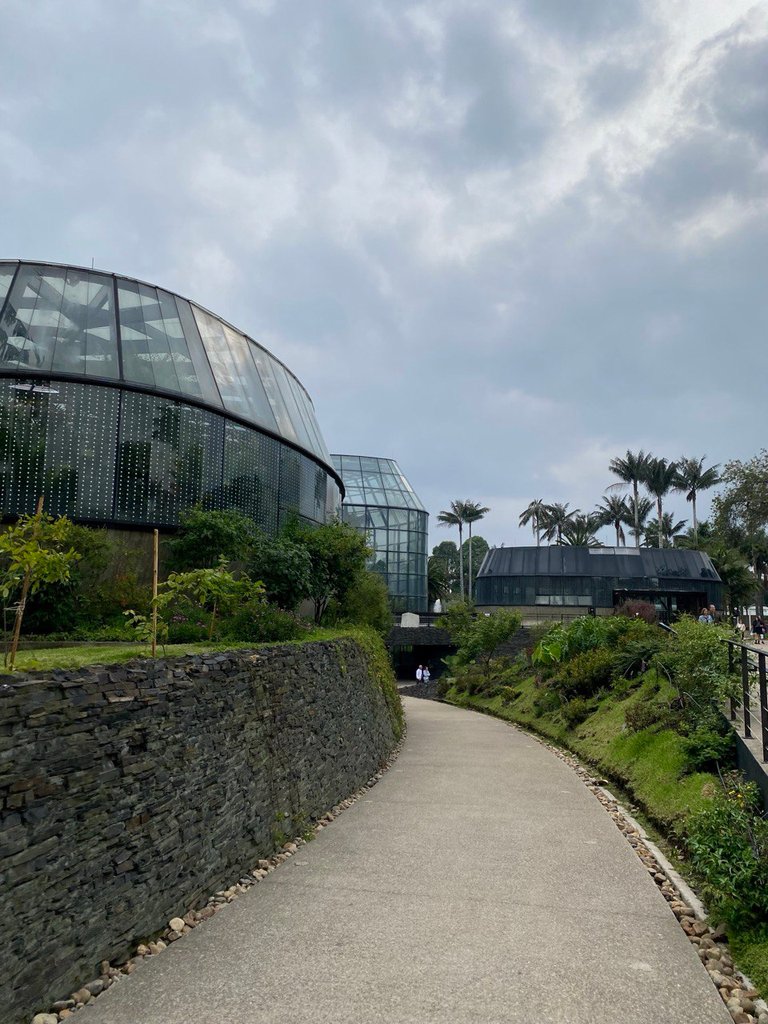
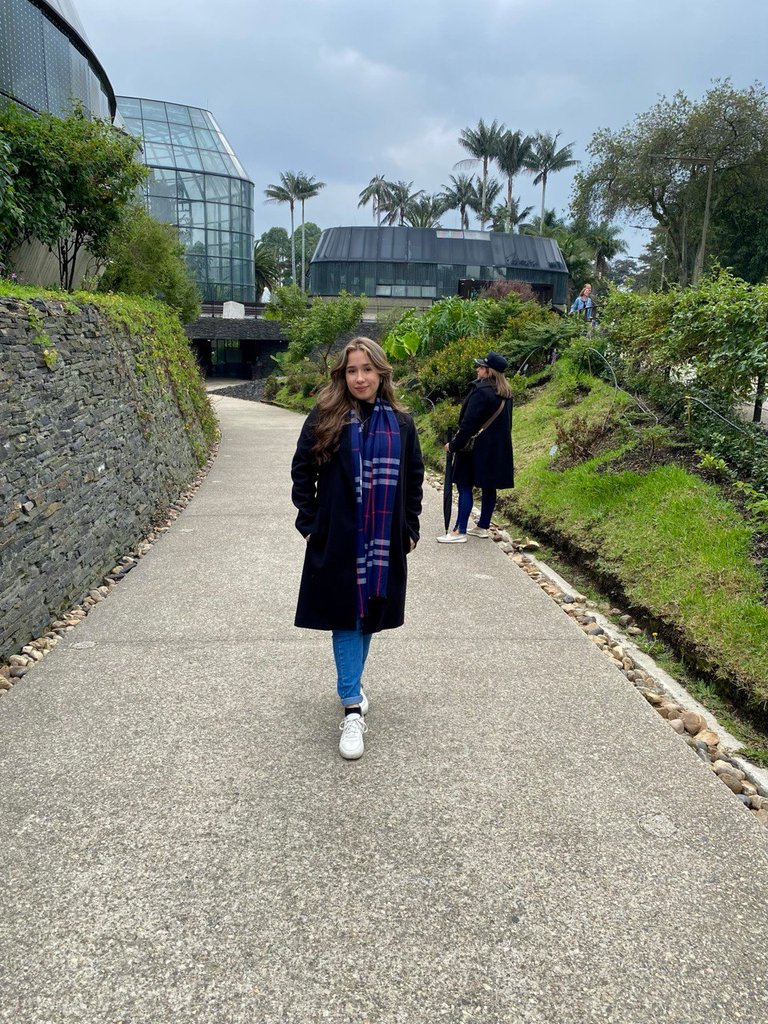

El tropicario es un circuito de 6 invernaderos de cristal donde encontramos desde superparamos hasta los ecosistemas que hacen parte de Colombia, bosques húmedos, secos, plantas medicinales, entre otras. Nuestra primera parada fueron los superparamos donde pudimos observar el tipo de suelo que se presenta en estas zonas, la variación en su radiación, temperatura y humedad, así como también pudimos observar las diferentes especies de plantas que nacen en estas zonas con escasa vegetación.
The tropicarium is a circuit of 6 glass greenhouses where we found from superparamos to the ecosystems that are part of Colombia, rainforests, dry forests, medicinal plants, among others. Our first stop was the superparamos where we could observe the type of soil that occurs in these areas, the variation in radiation, temperature and humidity, as well as we could observe the different species of plants that are born in these areas with sparse vegetation.



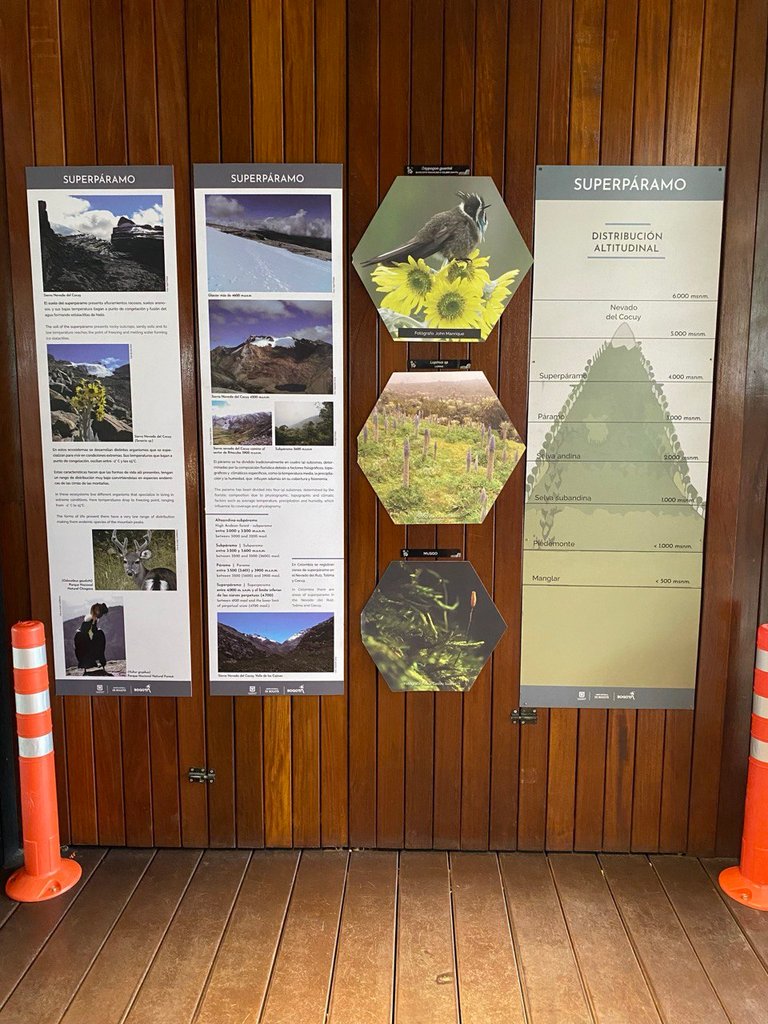
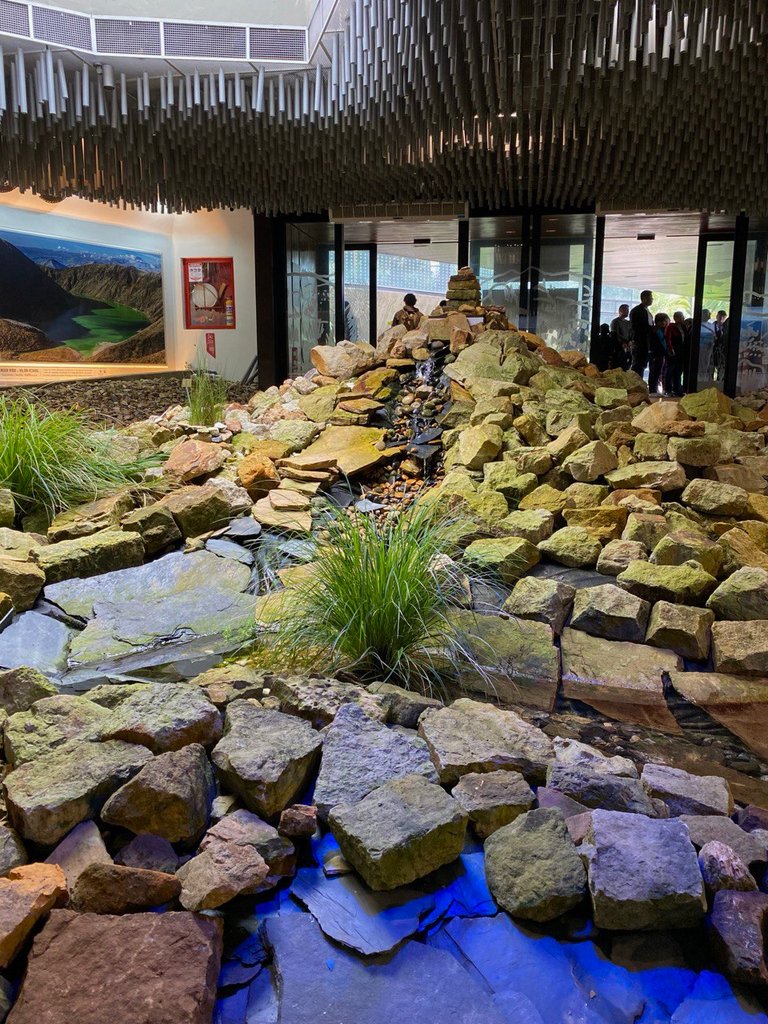
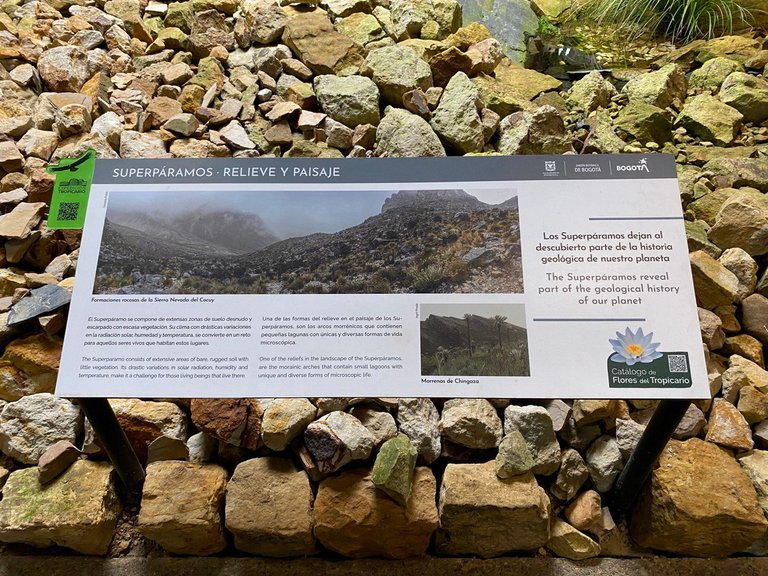
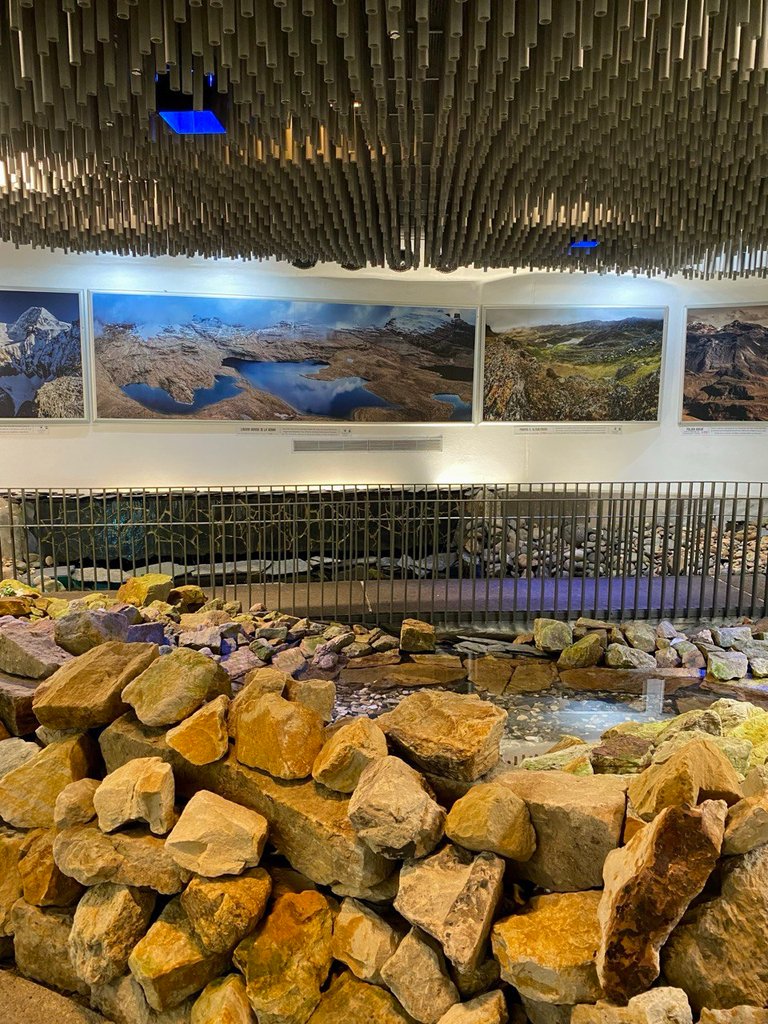
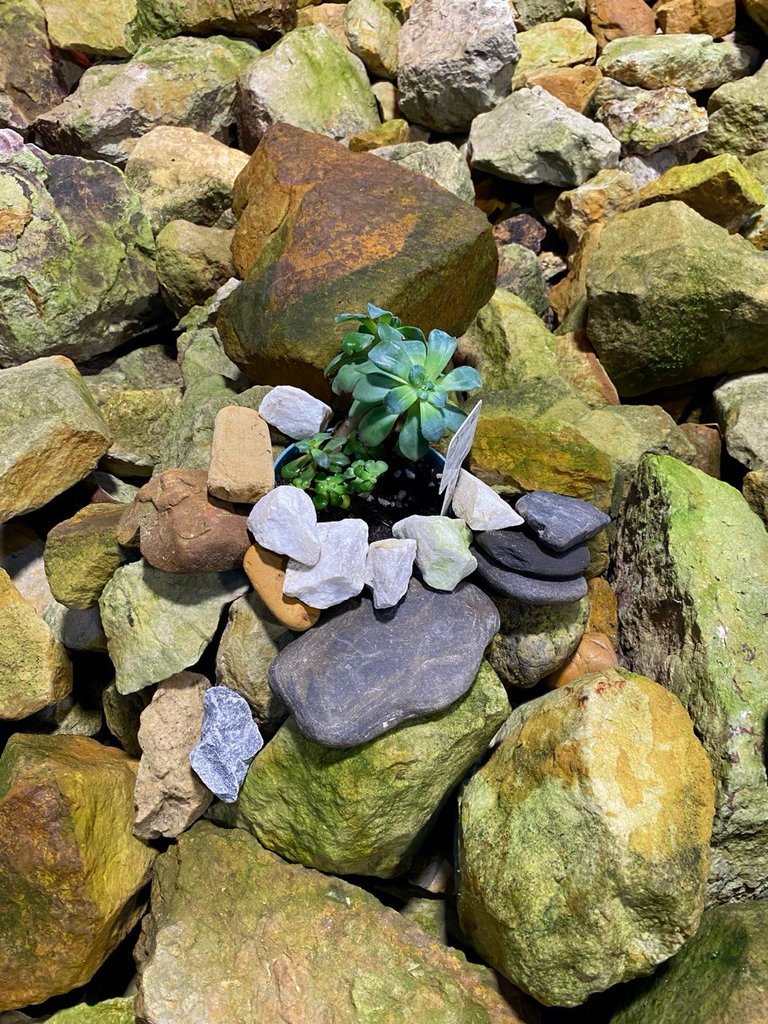
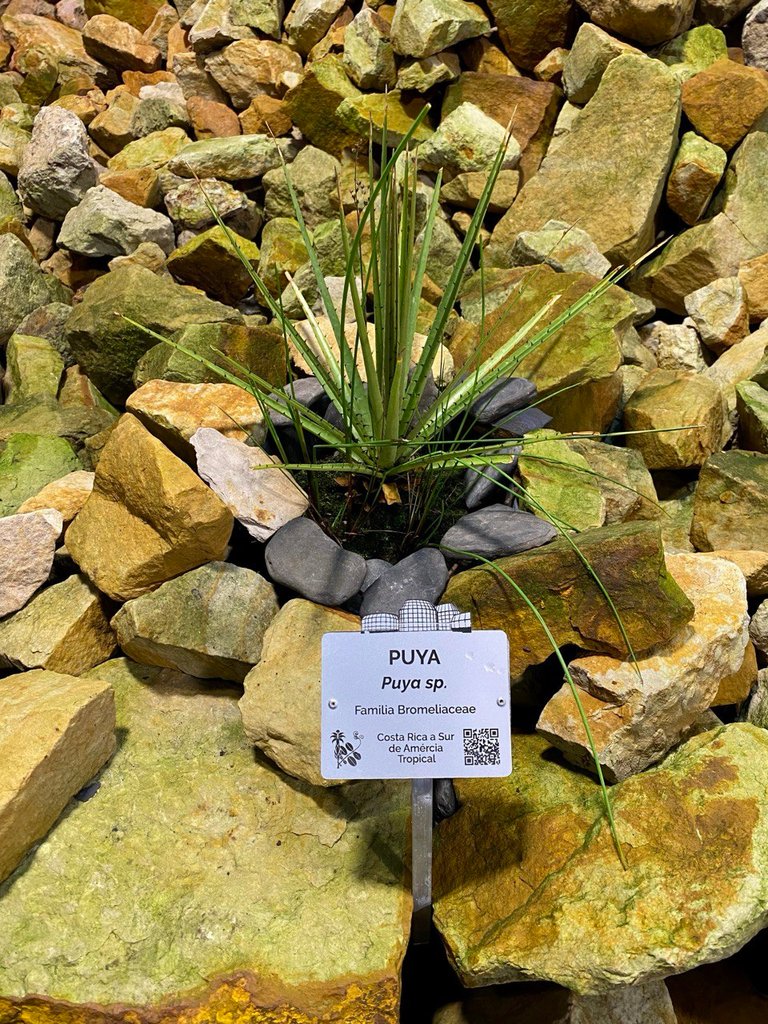

Nuestra segunda parada fue audiovisual, se trataba del Chocó Amazonia donde nos encontramos con una selva húmeda tropical, me encantó esta sala ya que se podía escuchar el sonido de la cascada, de las aves a parte de que teníamos que subir una especie de camino en forma de caracol donde cada vez podíamos sentir más la humedad del lugar.
Estar rodeada de tanta diversidad en cuanto a flores y plantas que no conocía es algo indescriptible, a demás de que el aroma a tierra húmeda te brinda la experiencia de hacerte sentir en medio de la selva. En este lugar se ve mucho lo que son las plantas epifitas, las cuales son plantas que se establecen sobre otras desarrollando así adaptaciones para vivir con las raíces fuera de tierra o arriba del suelo. También se cuenta con la presencia de musgos, helechos, orquídeas y antuarios.
Our second stop was audiovisual, it was the Chocó Amazonia where we found a tropical rainforest, I loved this room because you could hear the sound of the waterfall, the birds besides that we had to climb a kind of snail-shaped path where each time we could feel more and more the humidity of the place.
Being surrounded by so much diversity in terms of flowers and plants that I did not know is something indescribable, in addition to the aroma of damp earth gives you the experience of making you feel in the middle of the jungle. In this place you can see a lot of epiphytes plants, which are plants that establish themselves on others developing adaptations to live with their roots out of the ground. There is also the presence of mosses, ferns, orchids, and anthuriums.


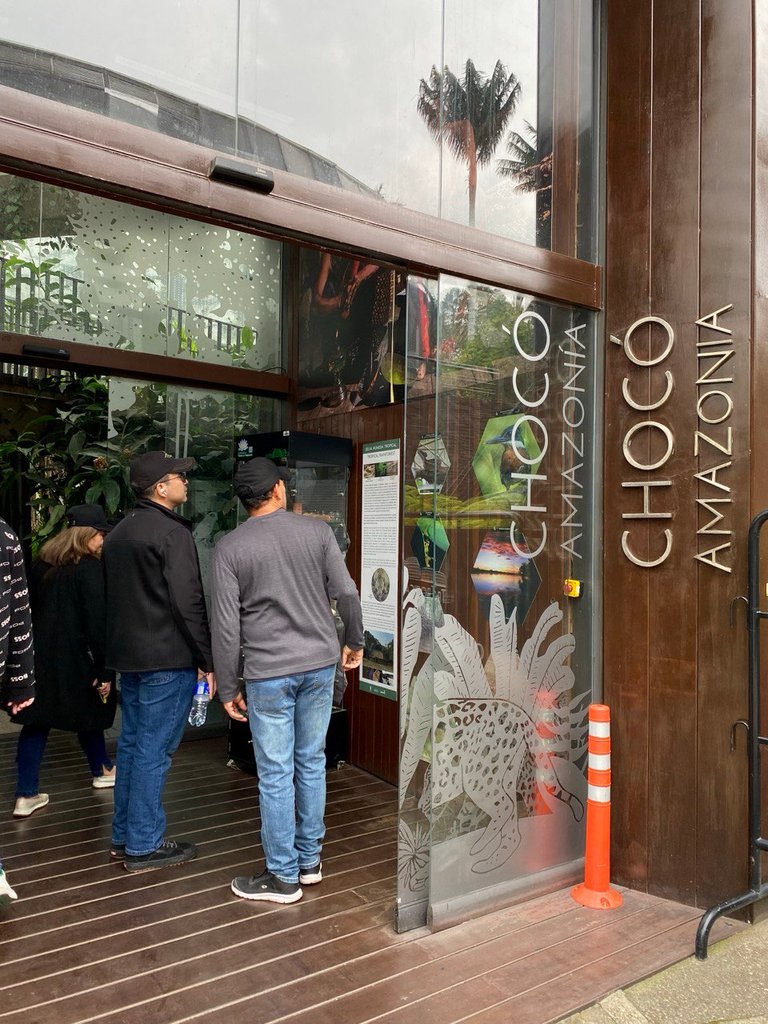
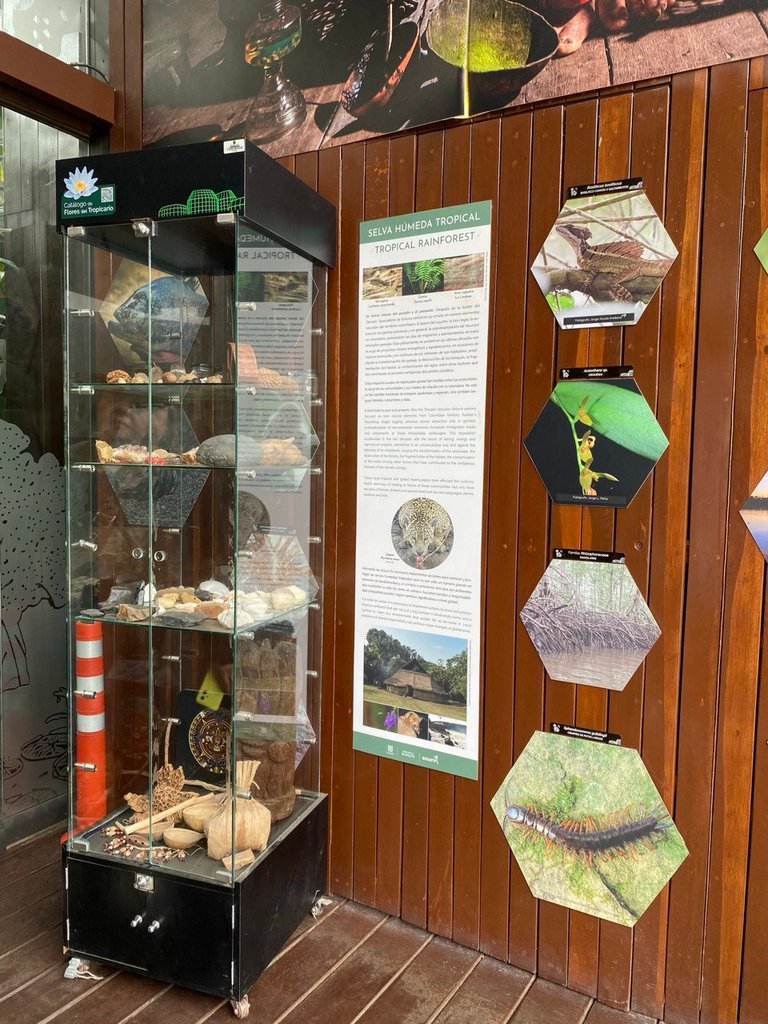



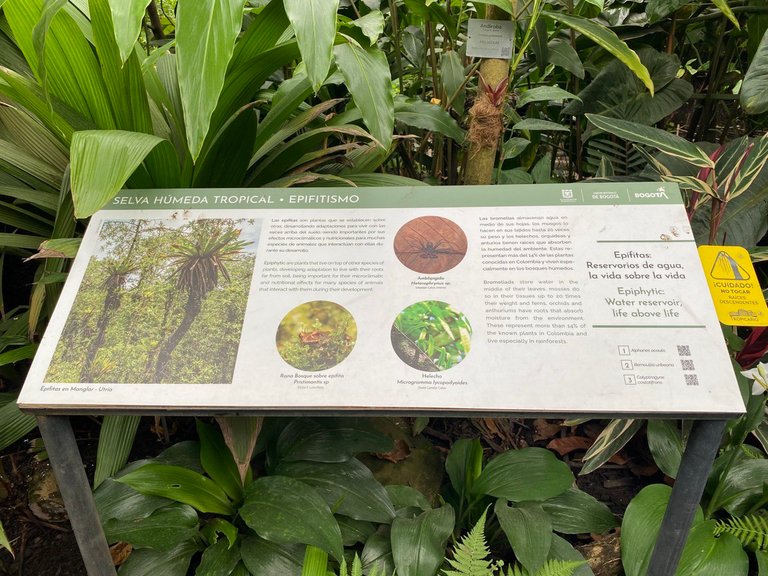
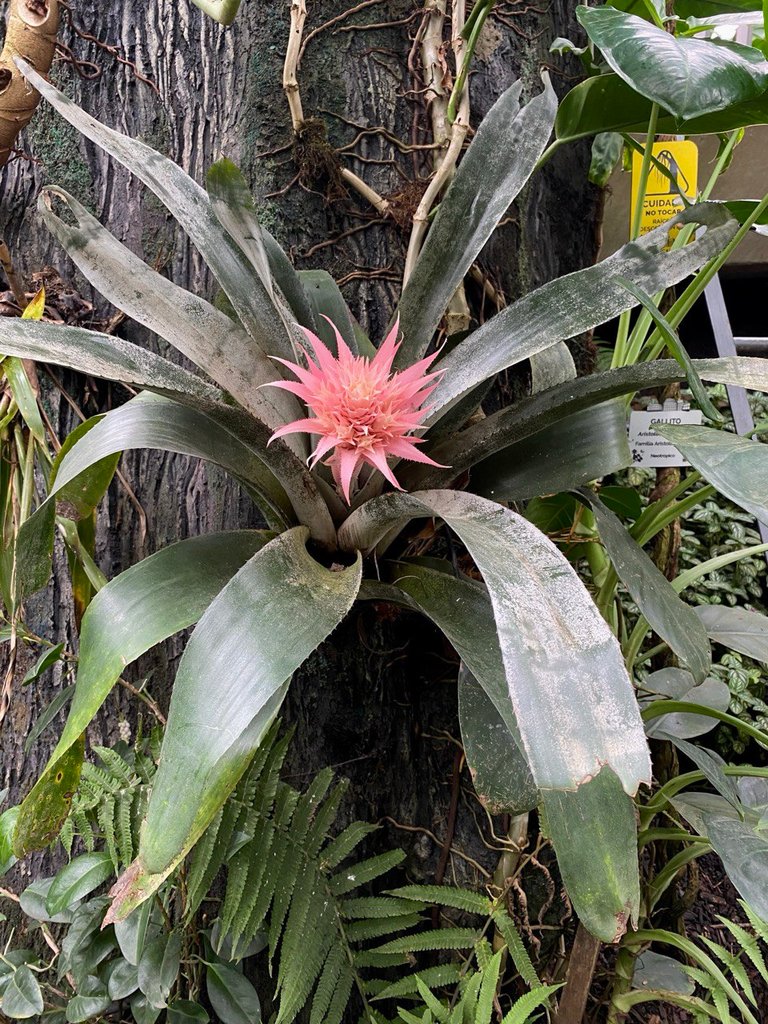
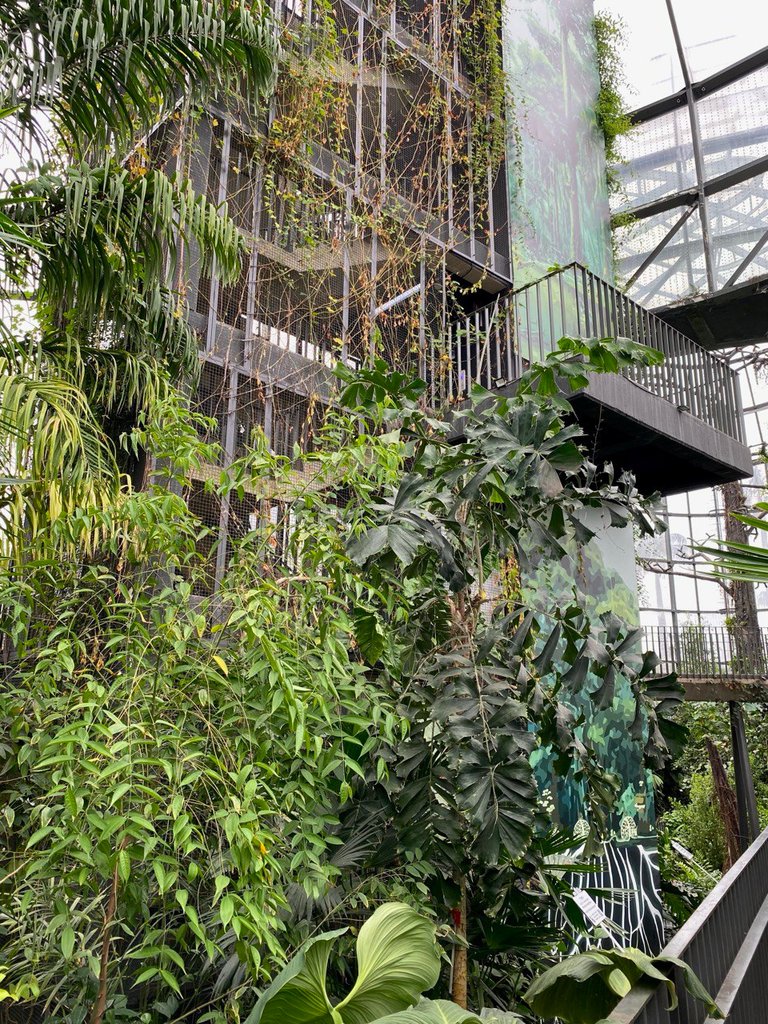
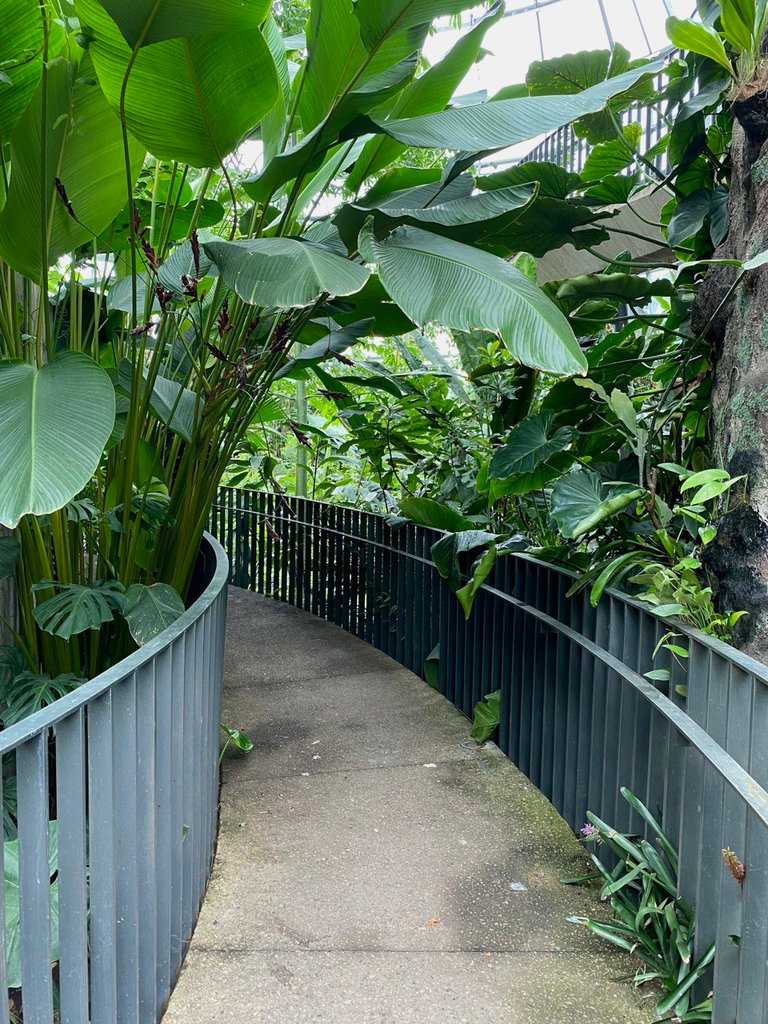

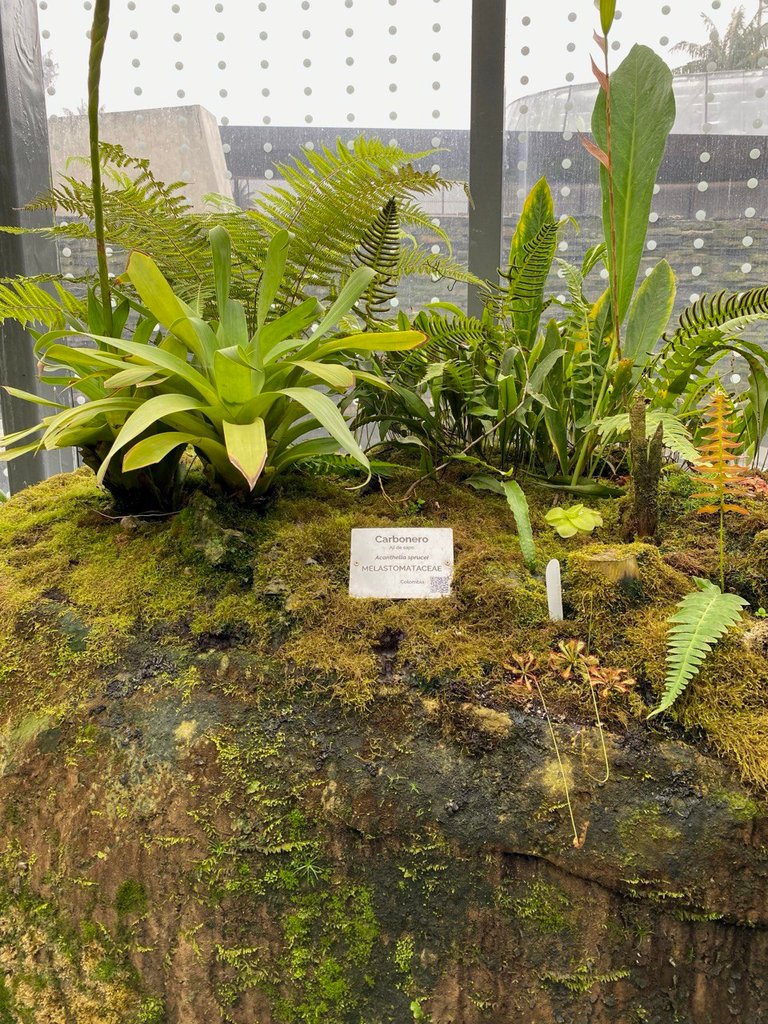
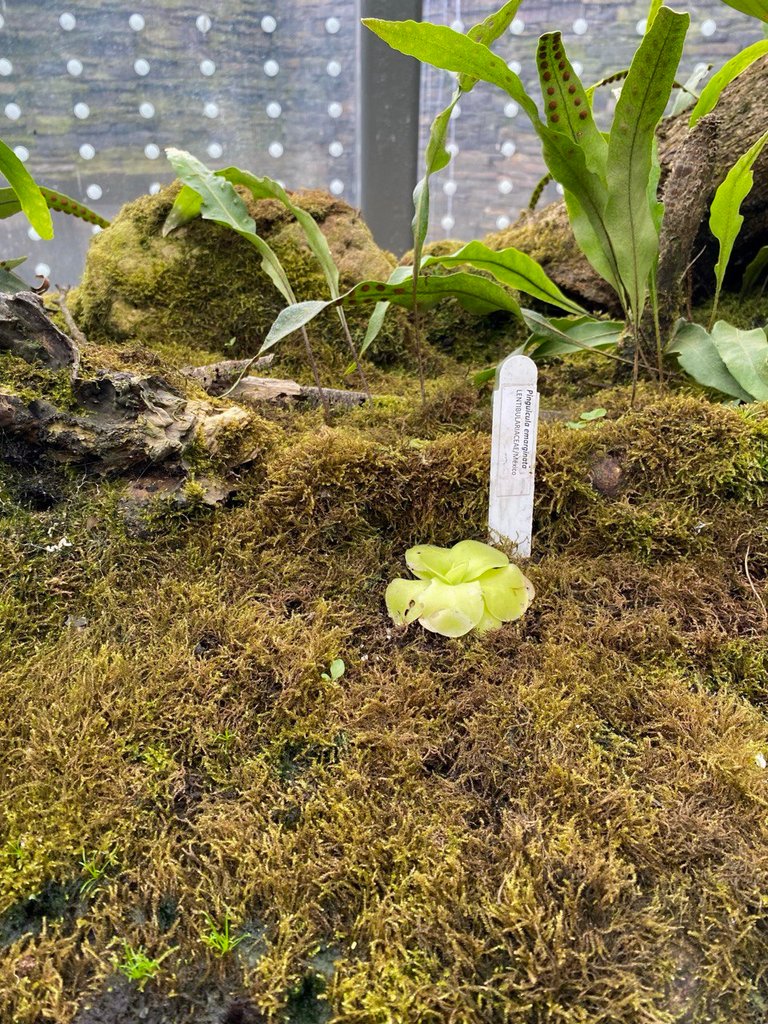
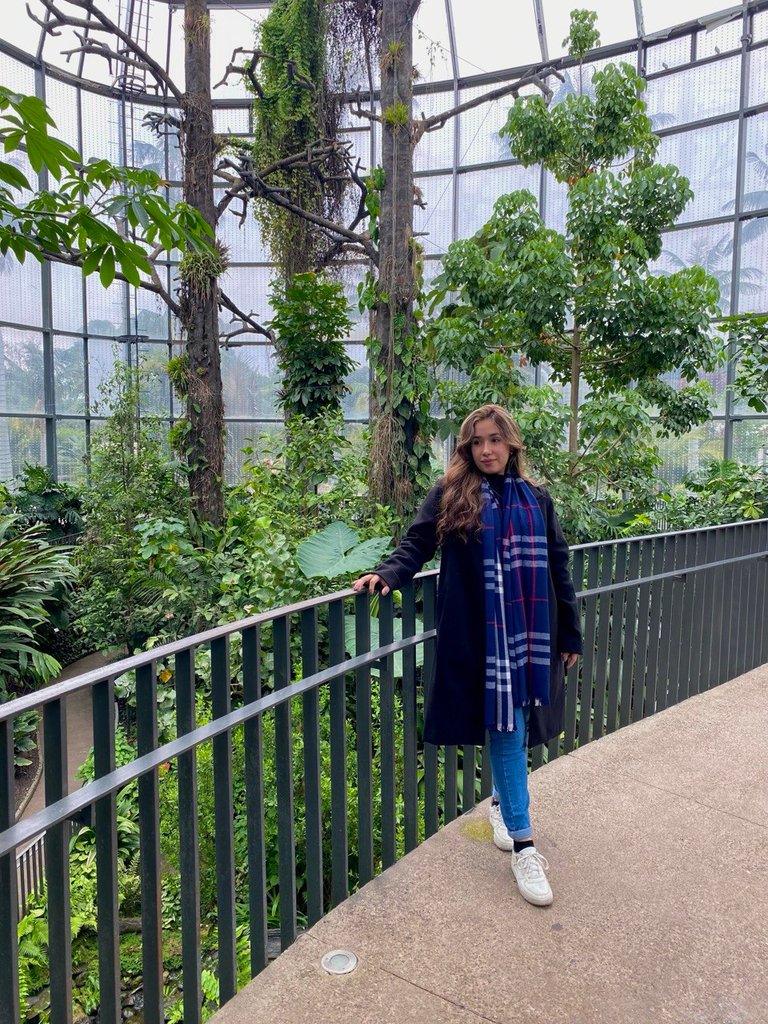

Siguiendo el camino hasta el final, encontramos la puerta que nos conduciría hasta el próximo bosque, en este caso el bosque seco y xerofítico el cual me sorprendió bastante ya que las plantas nacidas en estas zonas tienen la capacidad de retener el agua y aguantar temporadas bastantes largas sin este liquido y un dato importante es que los bosques secos del Caribe albergan más de 362 especies vegetales que proveen productos no maderables.
Following the road to the end, we found the door that would lead us to the next forest, in this case the dry and xerophytic forest which surprised me a lot because the plants born in these areas have the ability to retain water and endure quite long periods without this liquid and an important fact is that the dry forests of the Caribbean are home to more than 362 plant species that provide non-timber products.

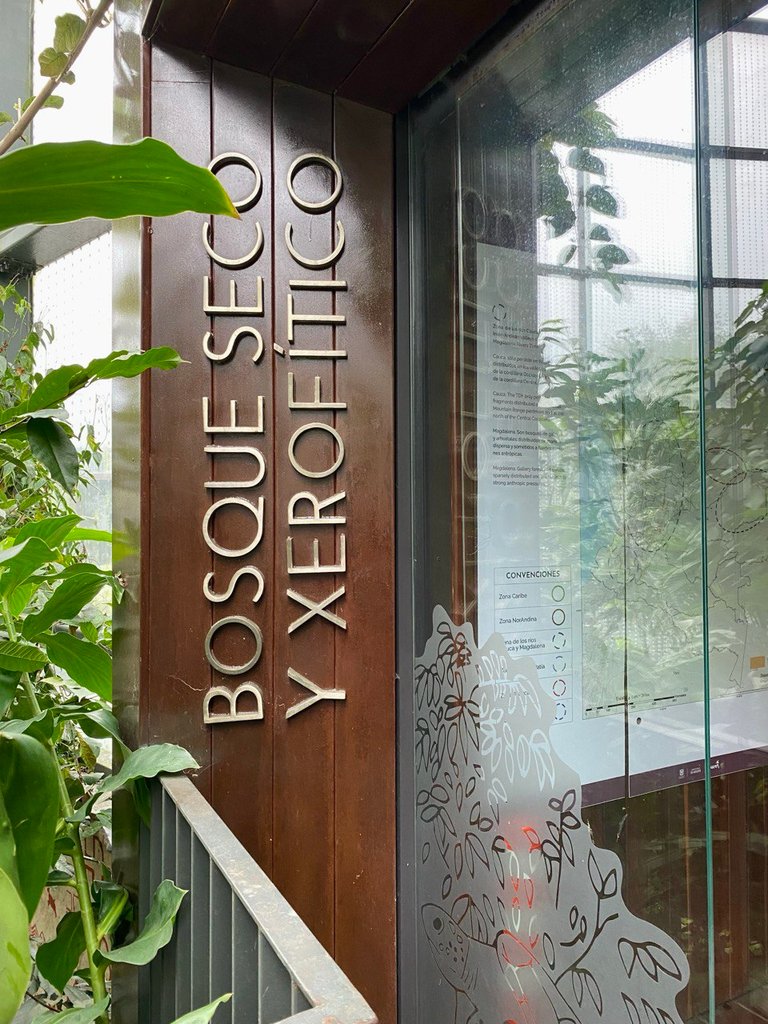
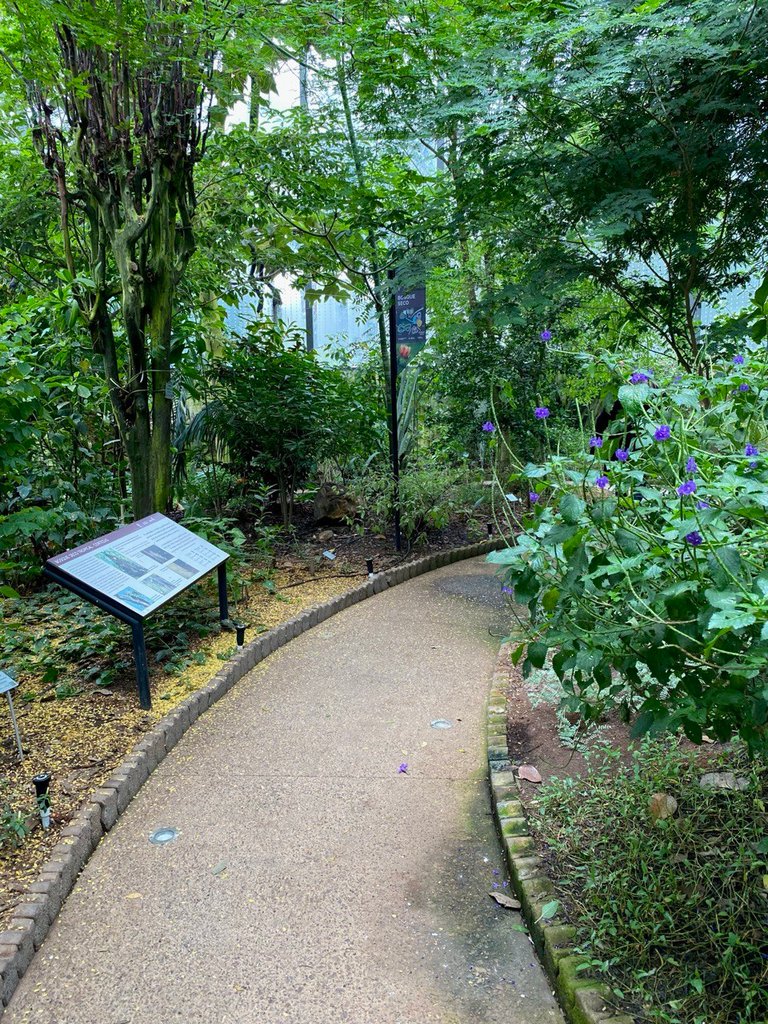
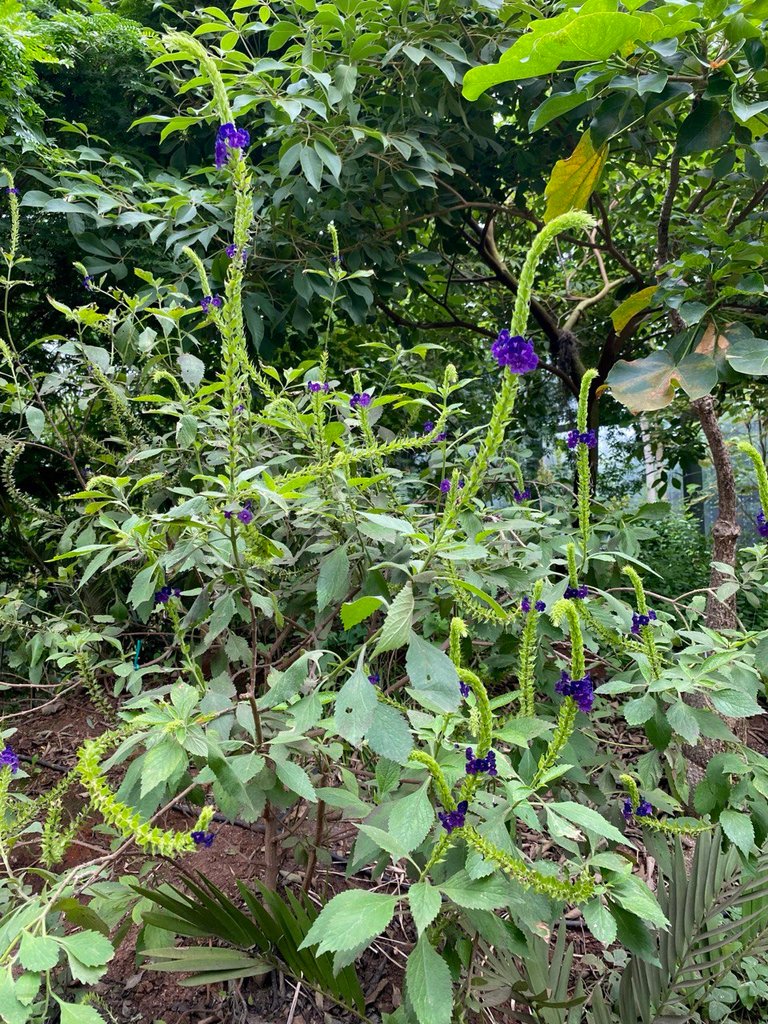
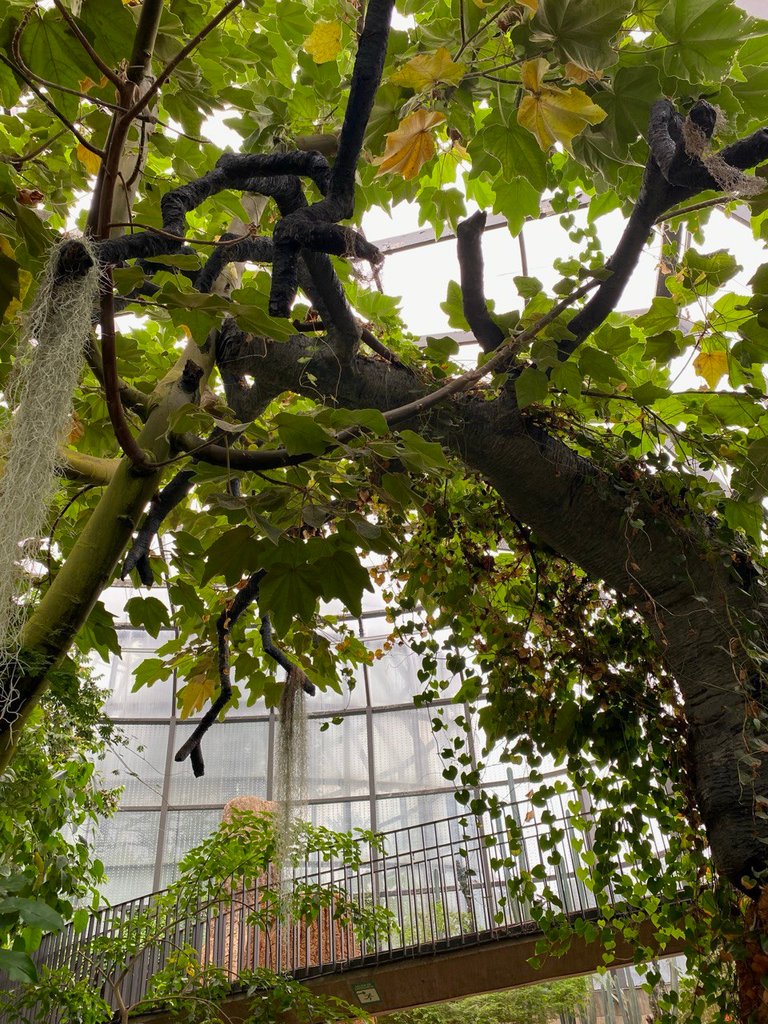
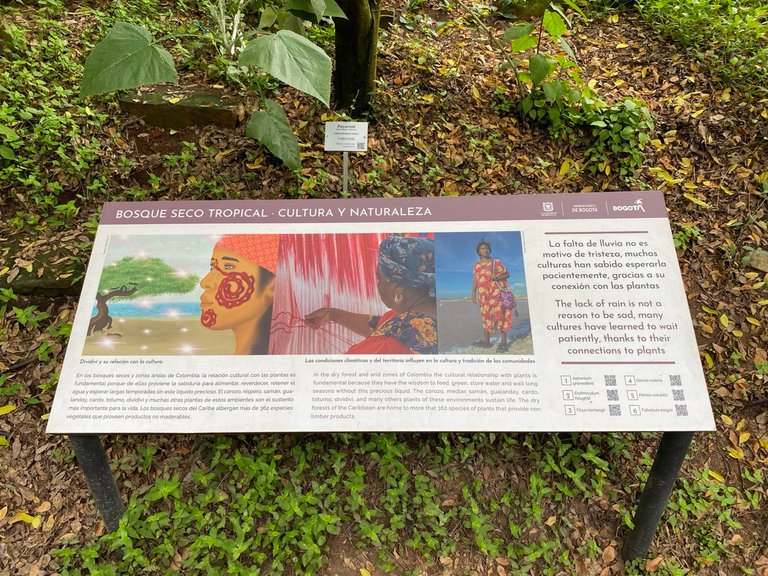
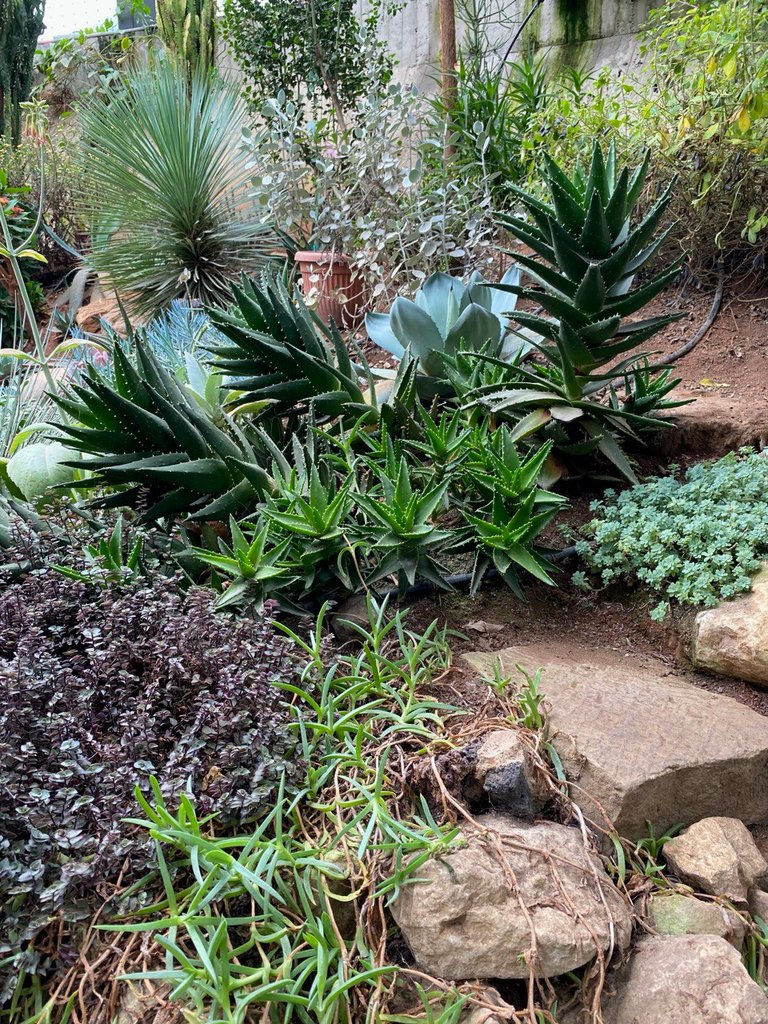
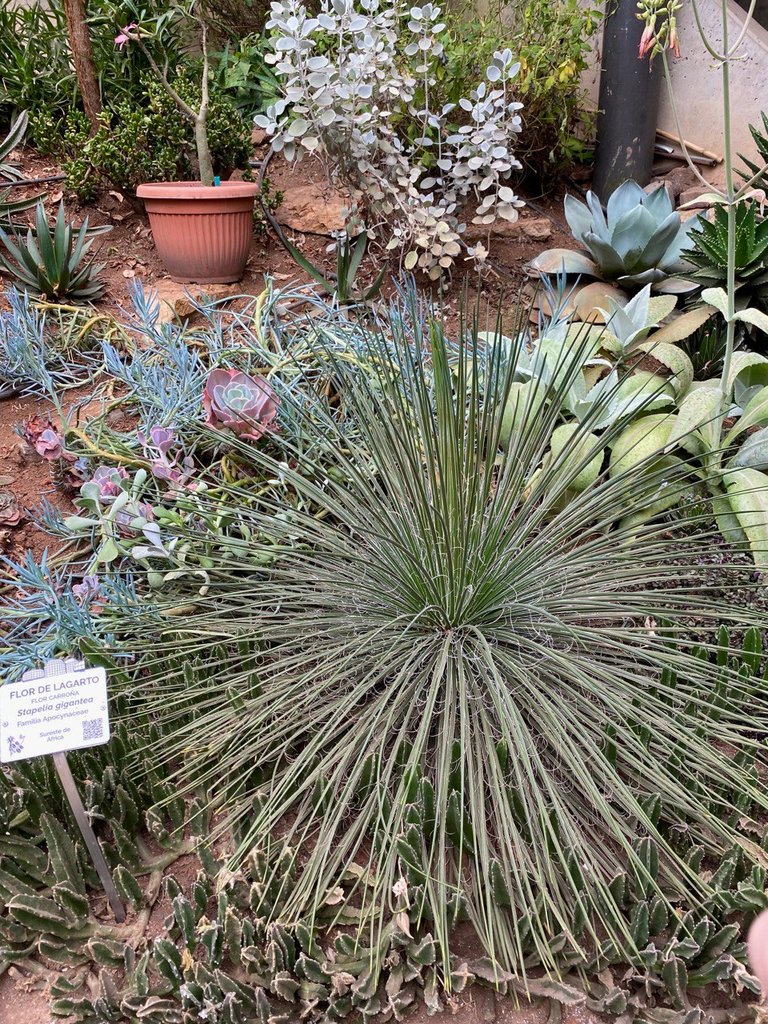
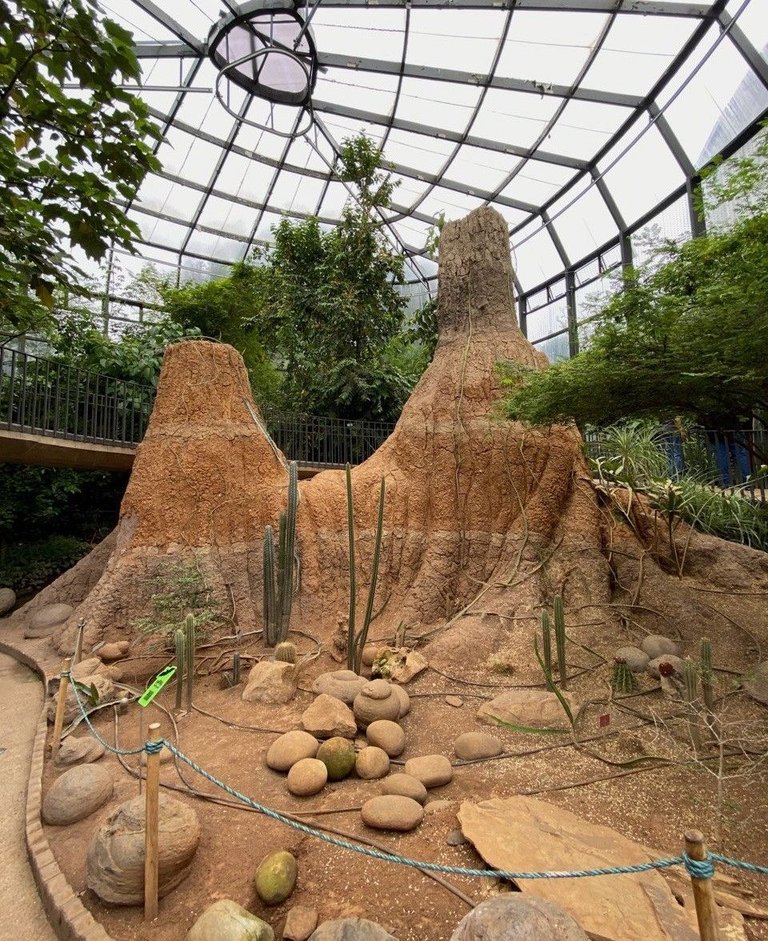
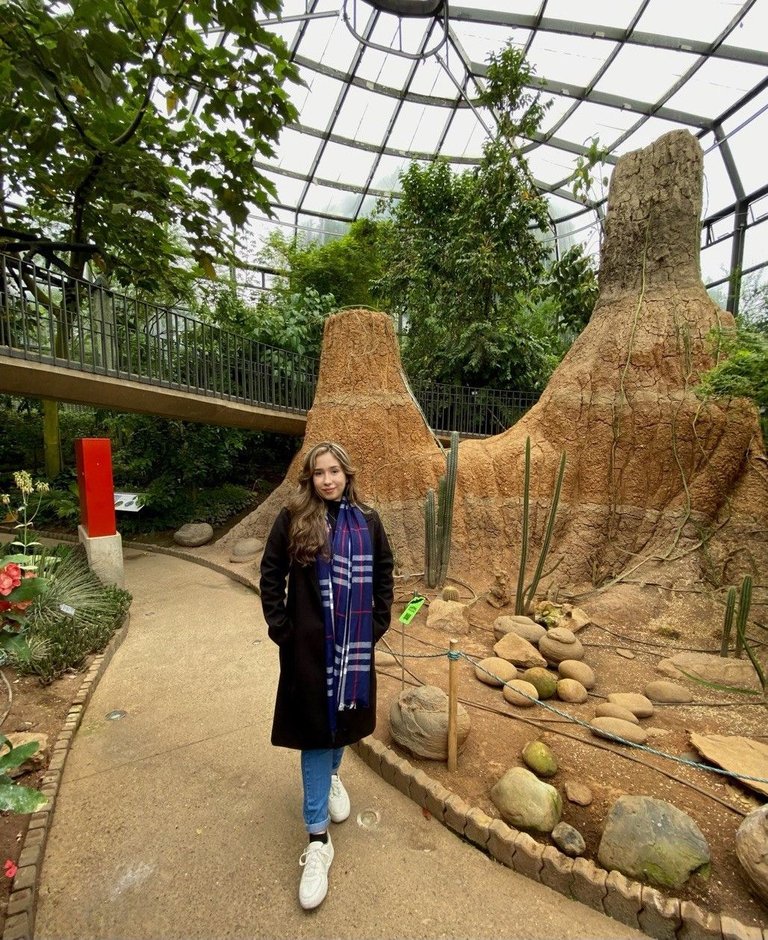

La tercera parada fue con las plantas útiles, donde encontramos plantas de poder como la coca, la ayahuacas, el tabaco, hierba del diablo, entre otras, son consideradas de esta manera debido a que contienen sustancias químicas que pueden alterar la mente y debido a su uso inadecuado fuera de su contexto natural han sido objeto de tabú y prohibición.
También nos encontramos con algunas especies nativas para la alimentación como la planta de papaya y piña, entre otras. En esta zona hay plantas medicinales, algunas plantas carnívoras, terrarios, especies como Zamias, heliconias y orquídeas las cuales han ido evolucionando con sofisticados colores y olores para atraer principalmente a los insectos para llevar a cabo la polinización.
The third stop was with useful plants, where we found power plants such as coca, ayahuacas, tobacco, devil's weed, among others, are considered this way because they contain chemicals that can alter the mind and due to their inappropriate use outside their natural context have been subject to taboo and prohibition.
We also find some native species for food such as papaya and pineapple plants, among others. In this area there are medicinal plants, some carnivorous plants, terrariums, species such as Zamias, heliconias and orchids which have evolved with sophisticated colors and scents to attract mainly insects to carry out pollination.

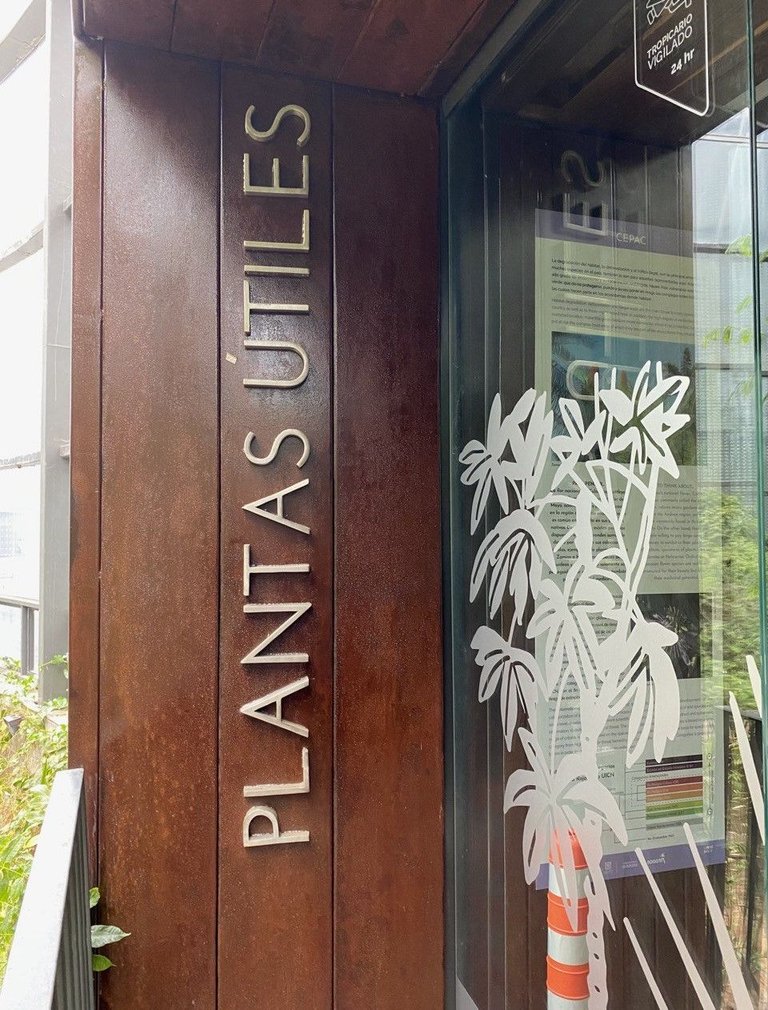


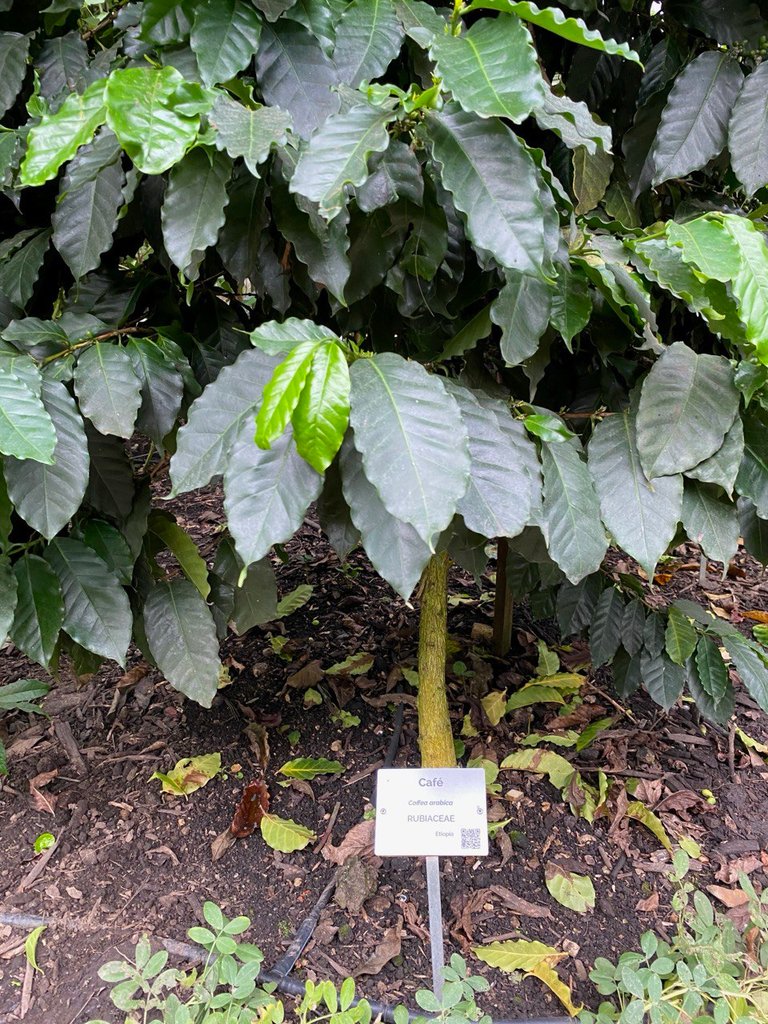


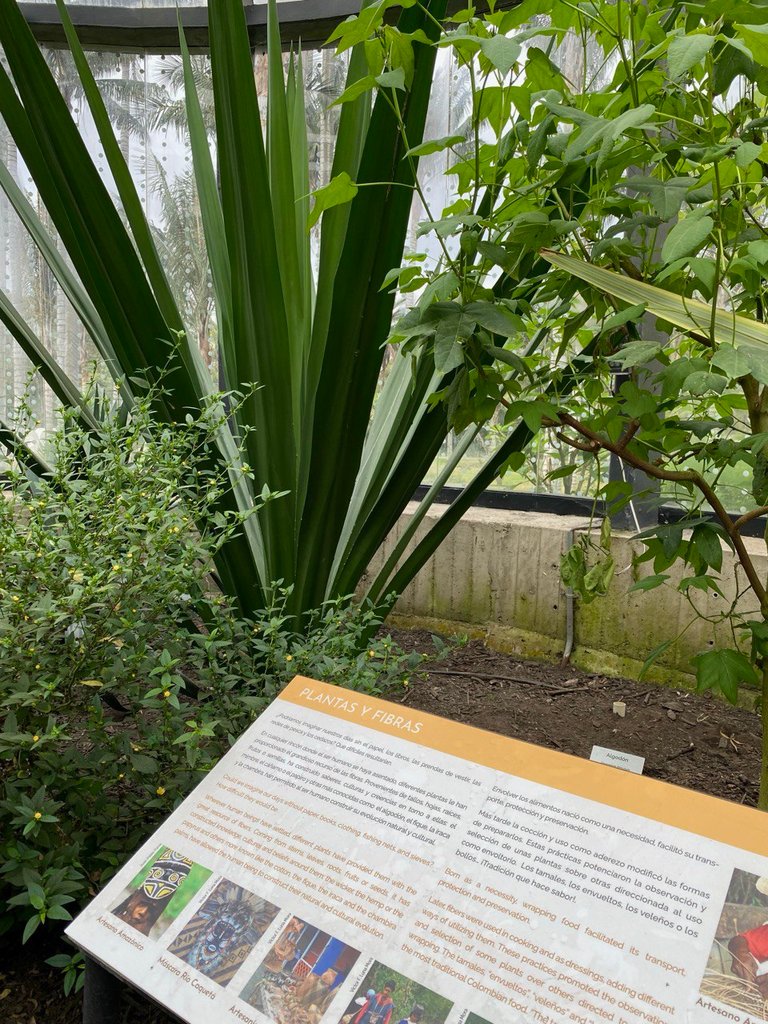
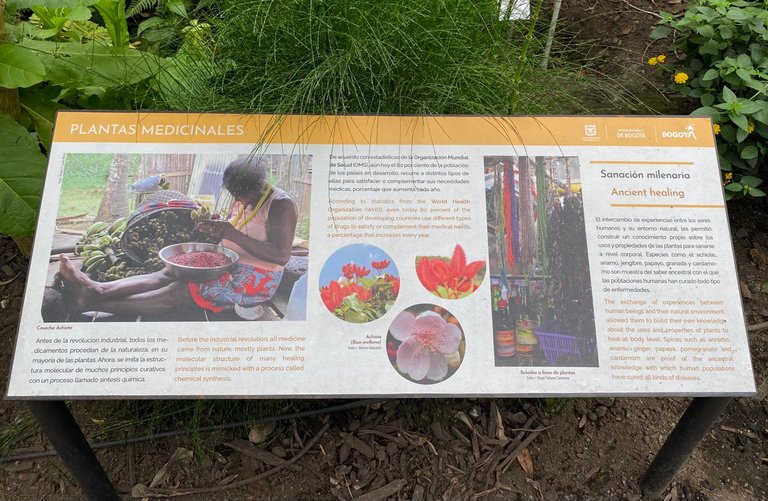
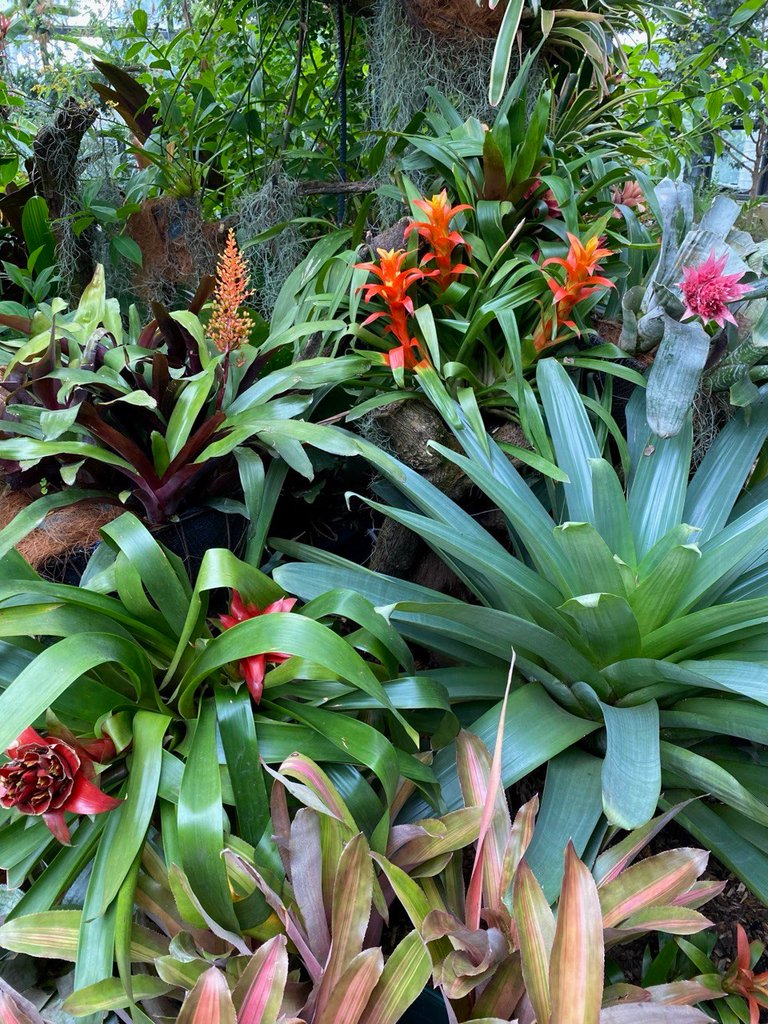
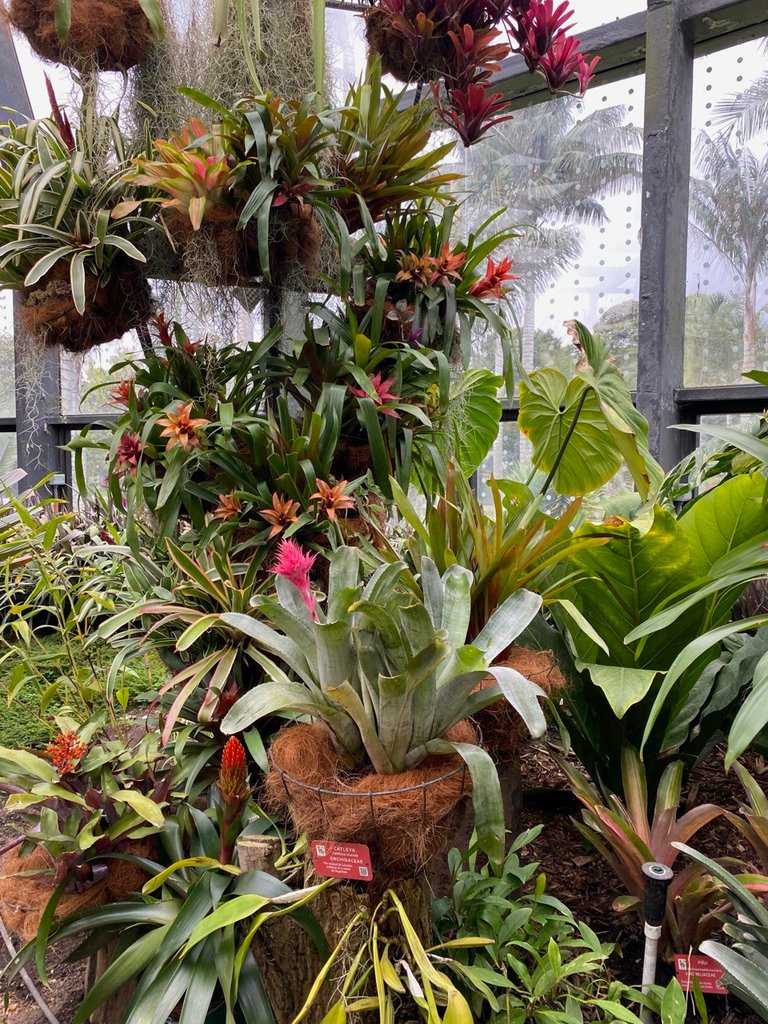
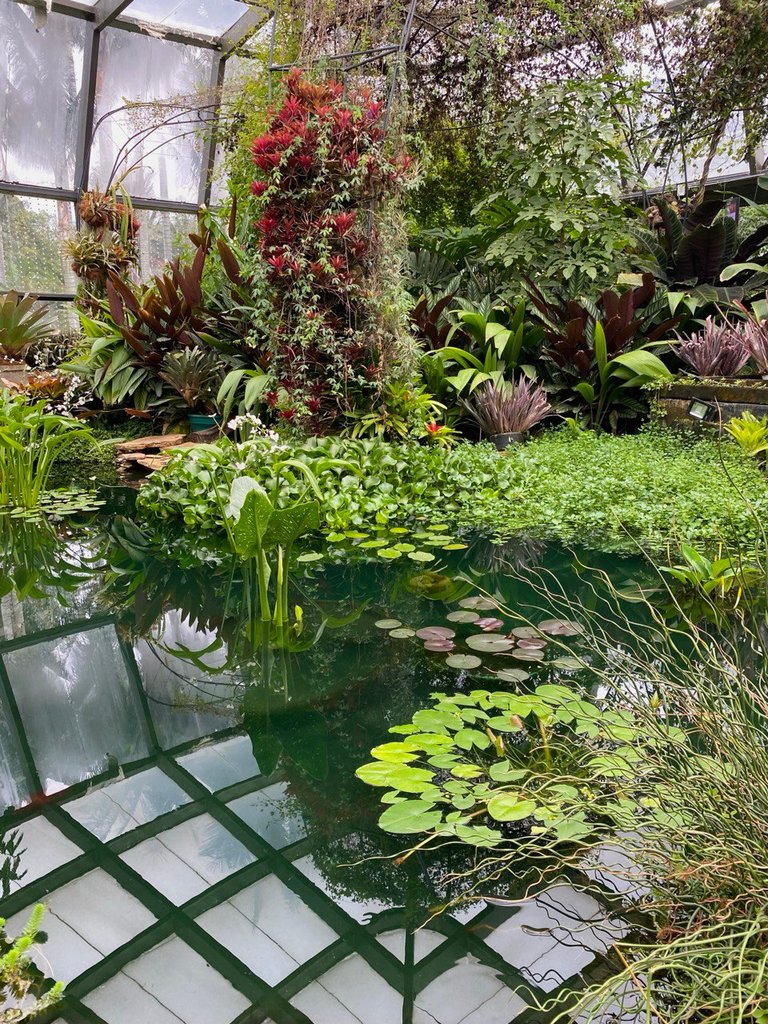
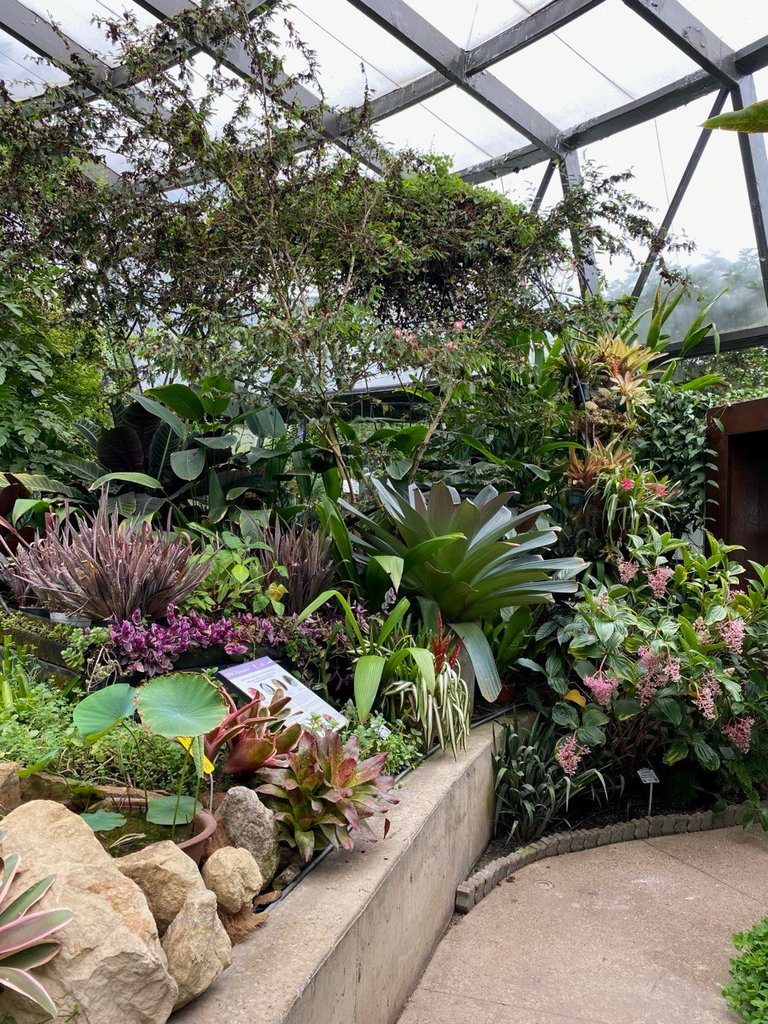

Al final llegamos a una de las zonas que fue mi favorita, desde esta especie de jardín se podía apreciar las palmeras de cera que les mostré al inicio, estaba lleno de muchas rosas y flores de todos los colores y tamaños, desde espireas, rosas 7 hermanas, rosas rojas, blancas, entre otras. Se sentía demasiada tranquilidad en esta zona y era tan linda y llamativa que la gente, incluidos nosotros, decidimos tomarnos algunas fotos para el recuerdo.
At the end we arrived at one of the areas that was my favorite, from this kind of garden you could see the wax palms that I showed you at the beginning, it was full of many roses and flowers of all colors and sizes, from spirea, 7 sisters roses, red roses, white roses, among others. It felt so peaceful in this area and it was so beautiful and eye-catching that people, including us, decided to take some pictures for the memory.

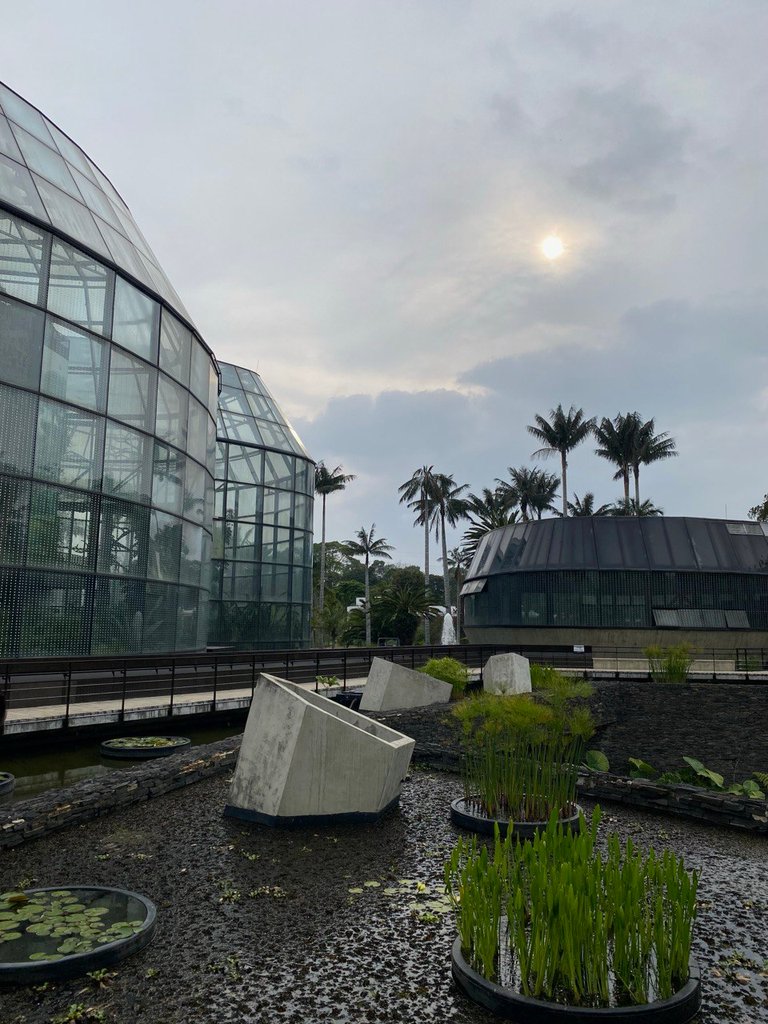
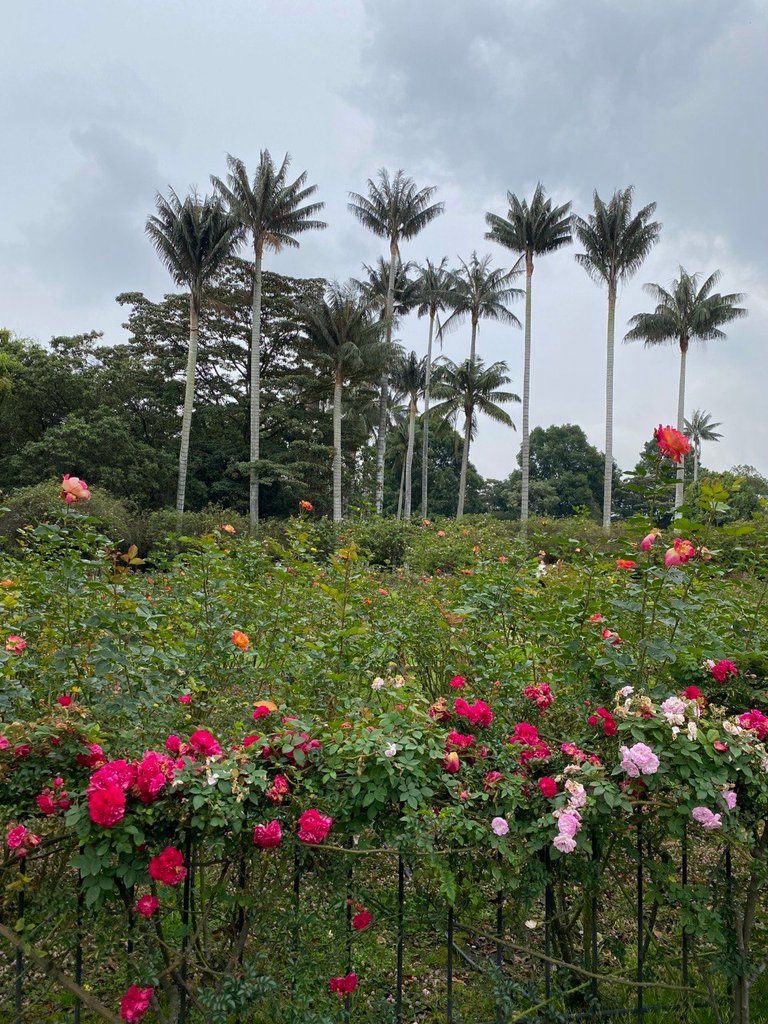
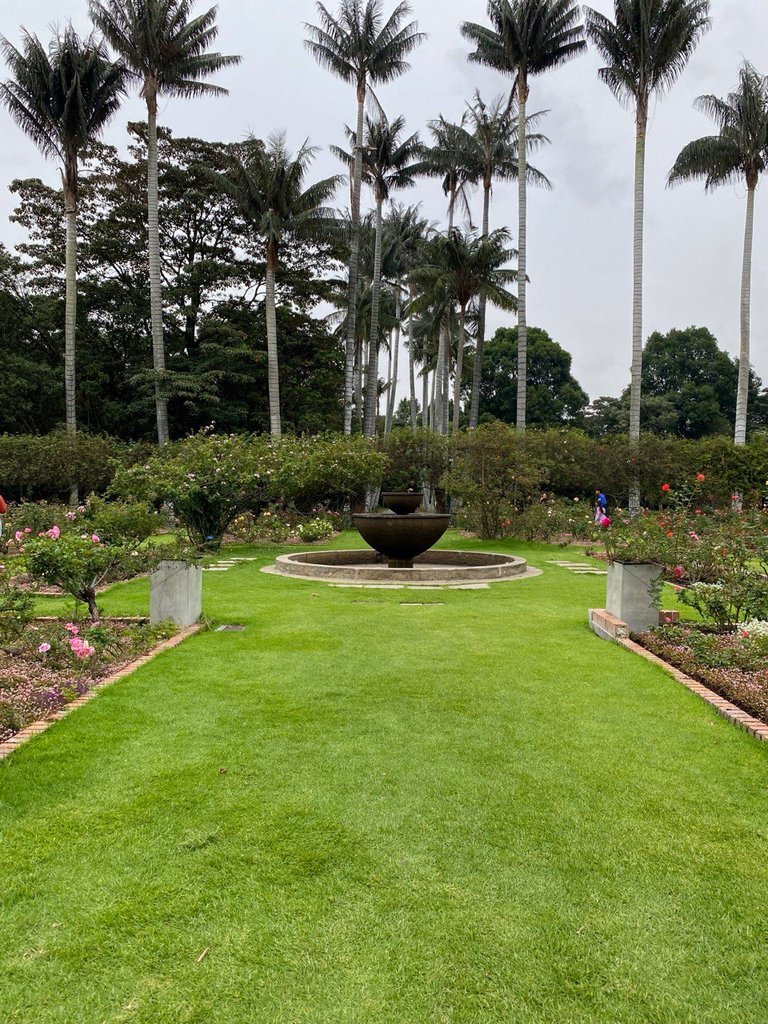
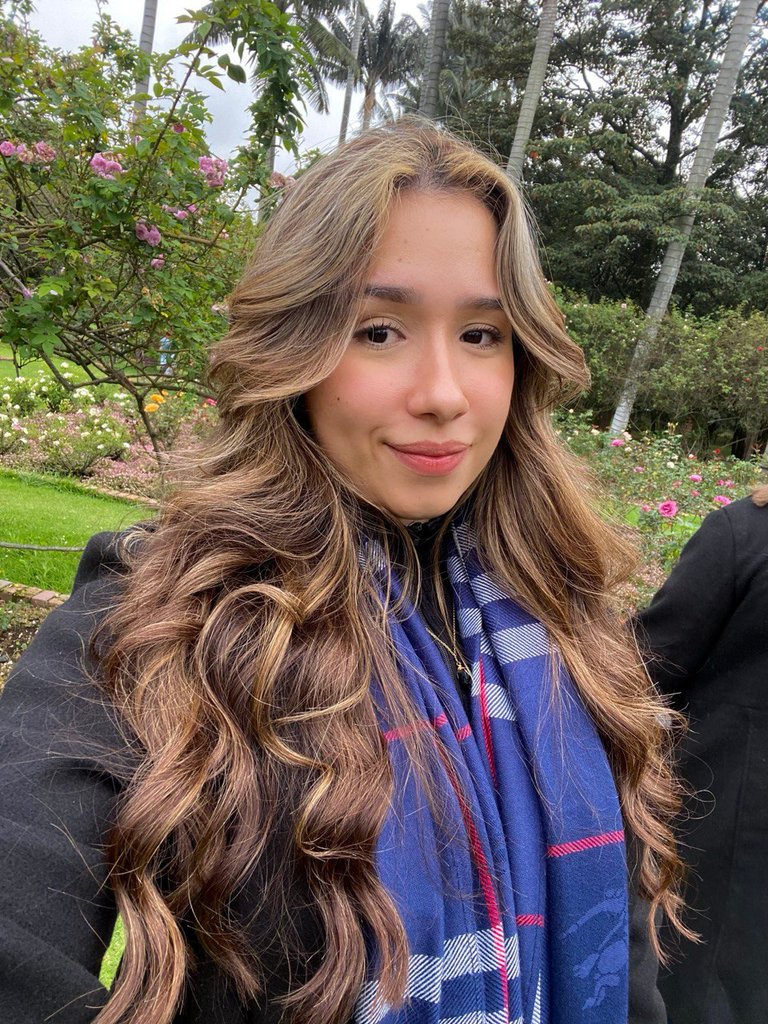
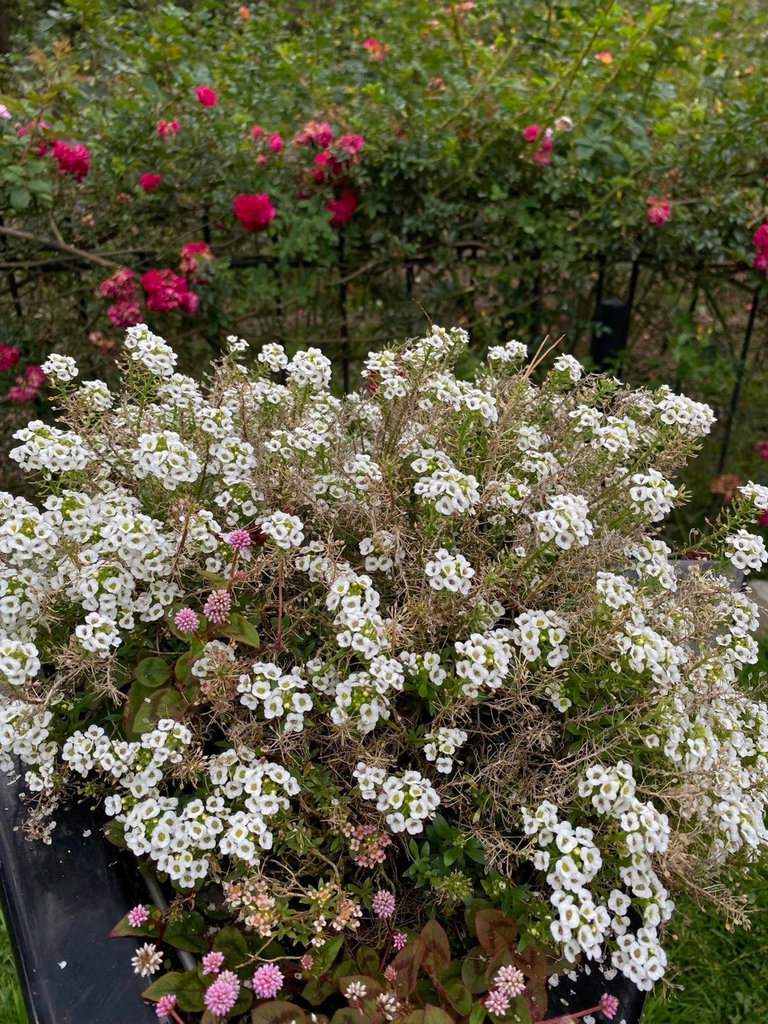
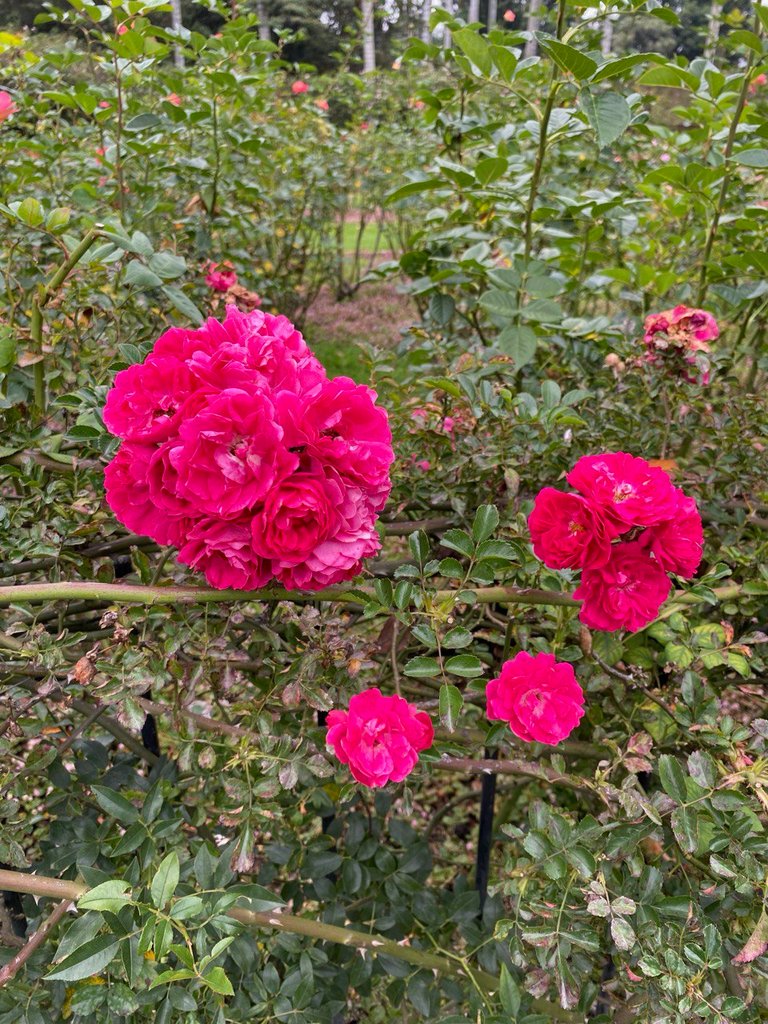
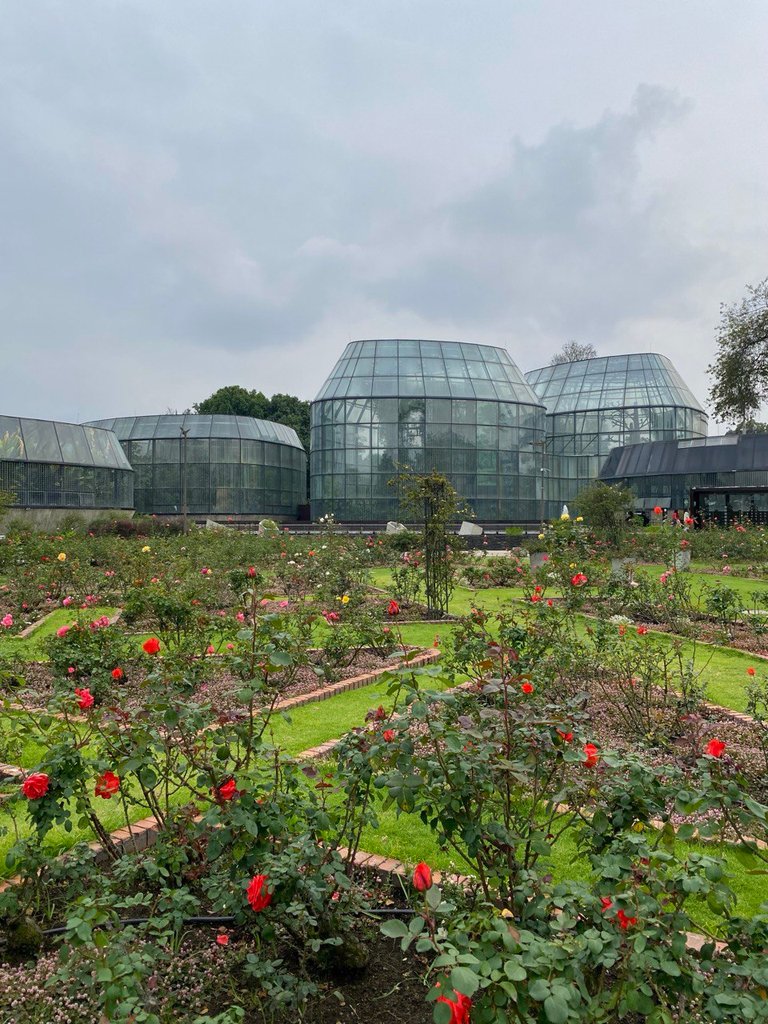
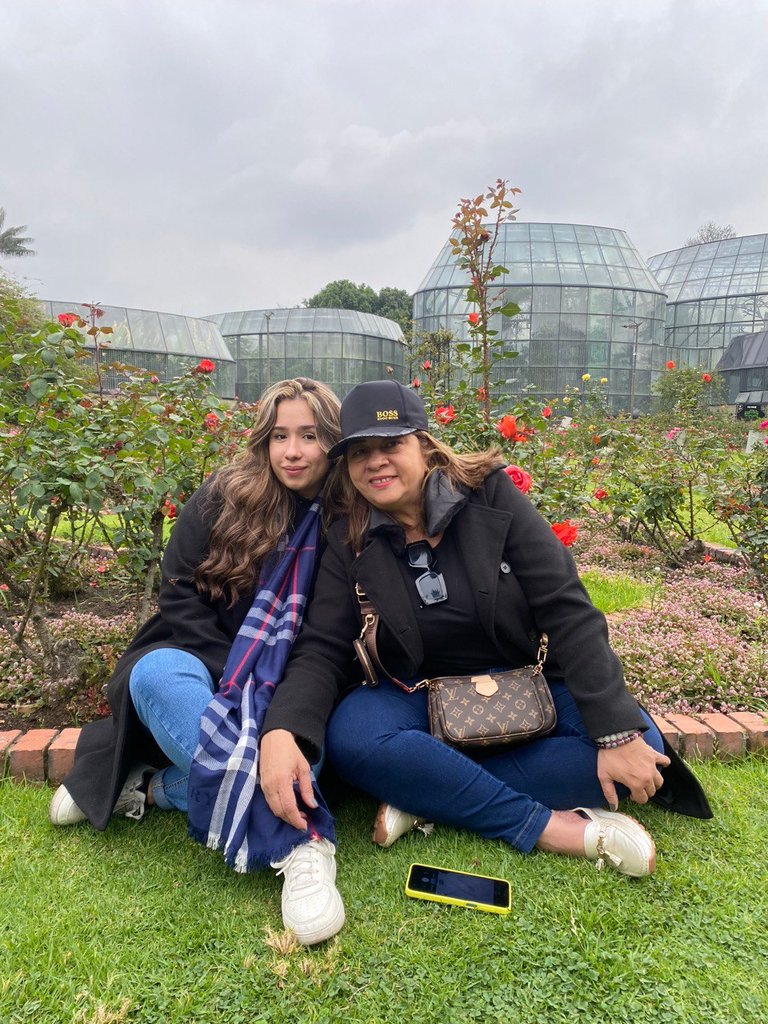
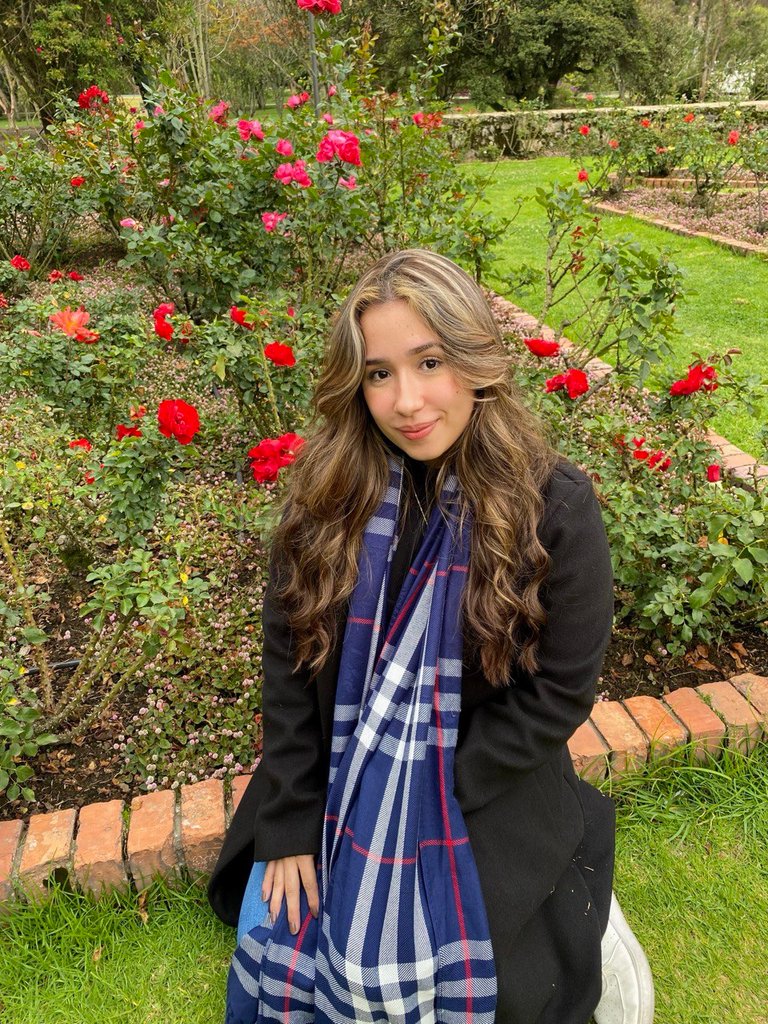
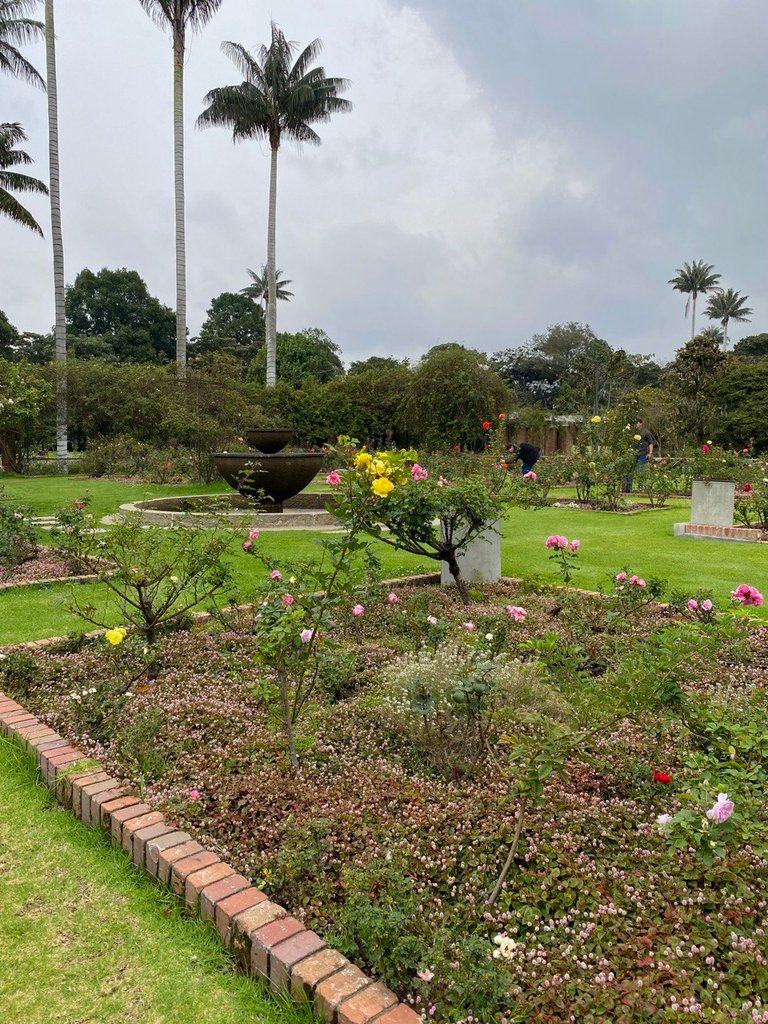

Ya saliendo de los tropicos que fue donde más tiempo estuvimos decidimos darle una última vuelta al lugar, aunque si les soy sincera es tan grande que no pudimos recorrerlo todo. Logramos llegar al cedro de montaña que se trata de un largo camino lleno de muchos cedros donde se puede respirar aire fresco, también pudimos visitar el jardín Agroecológico donde pudimos observar una gran variedad de plantas que diariamente solemos encontrar en el supermercado como coles, lechugas, zanahoria, entre otras. Esto me pareció super interesante y llamativo la verdad.
After leaving the tropics, which was where we spent most of our time, we decided to take one last look around the place, although if I am honest, it is so big that we could not go all the way around. We managed to get to the mountain cedar which is a long road full of many cedars where you can breathe fresh air, we were also able to visit the Agroecological garden where we could see a variety of plants that we usually find daily in the supermarket such as cabbage, lettuce, carrots, among others. I found this to be very interesting and striking.

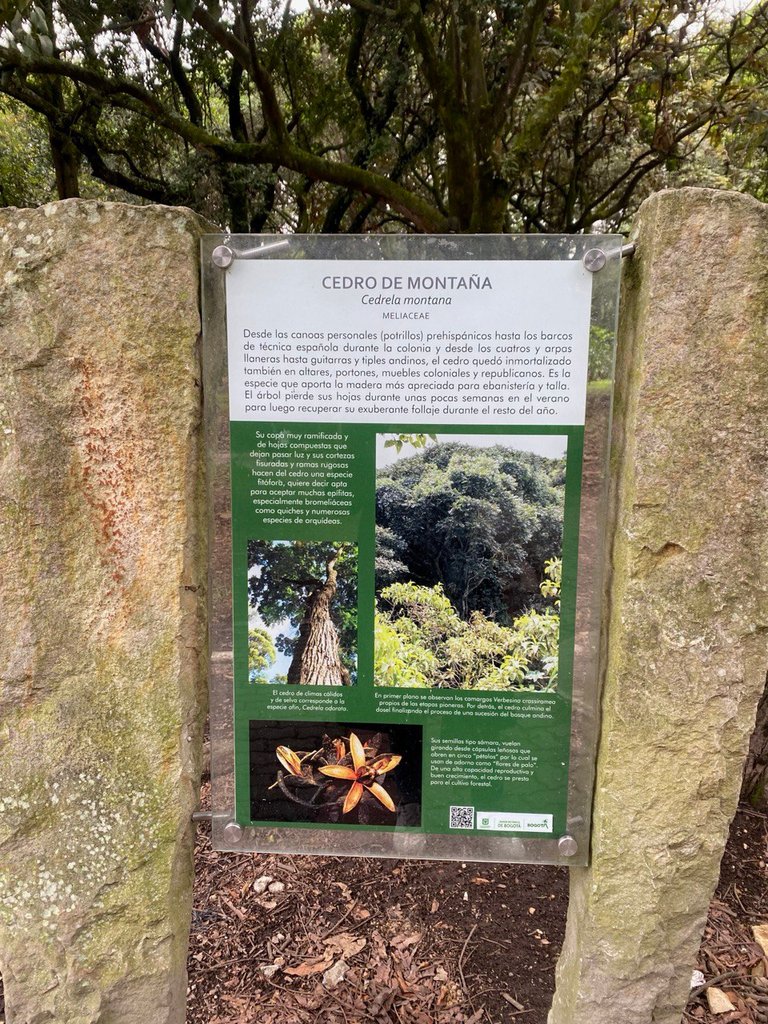

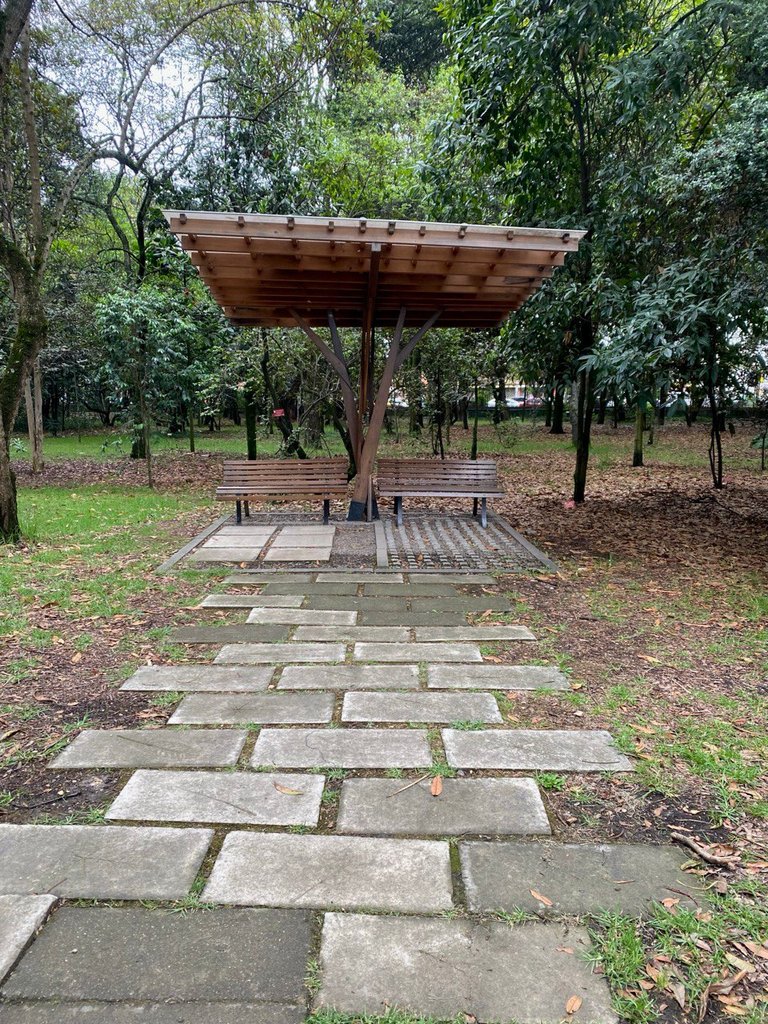
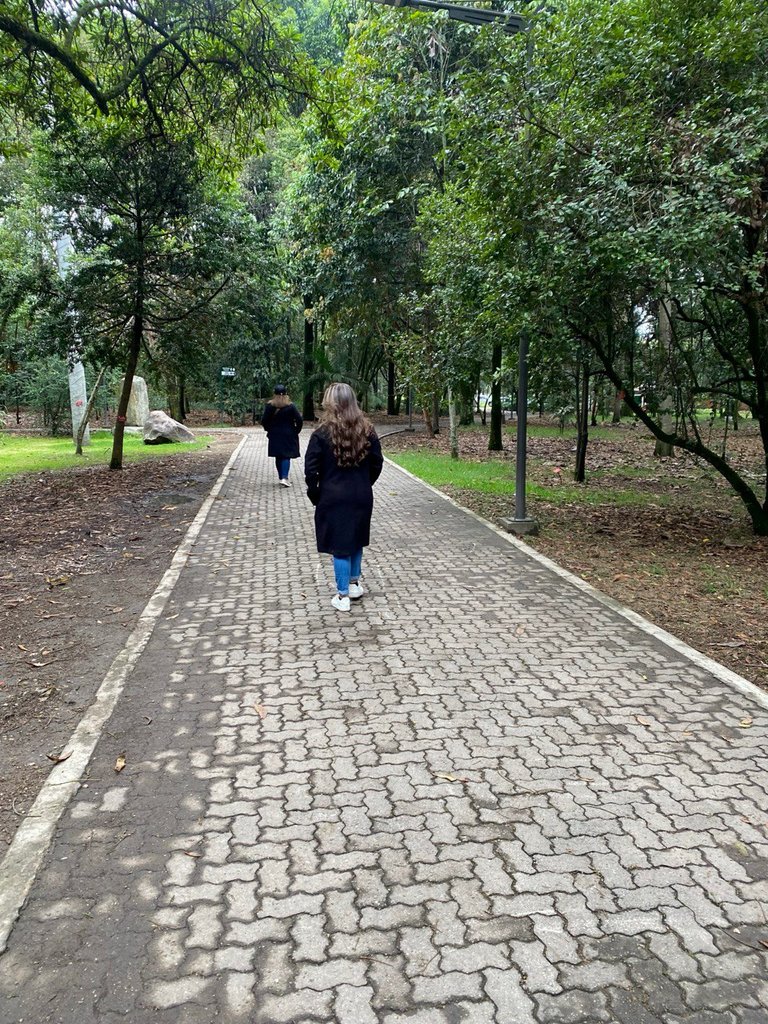
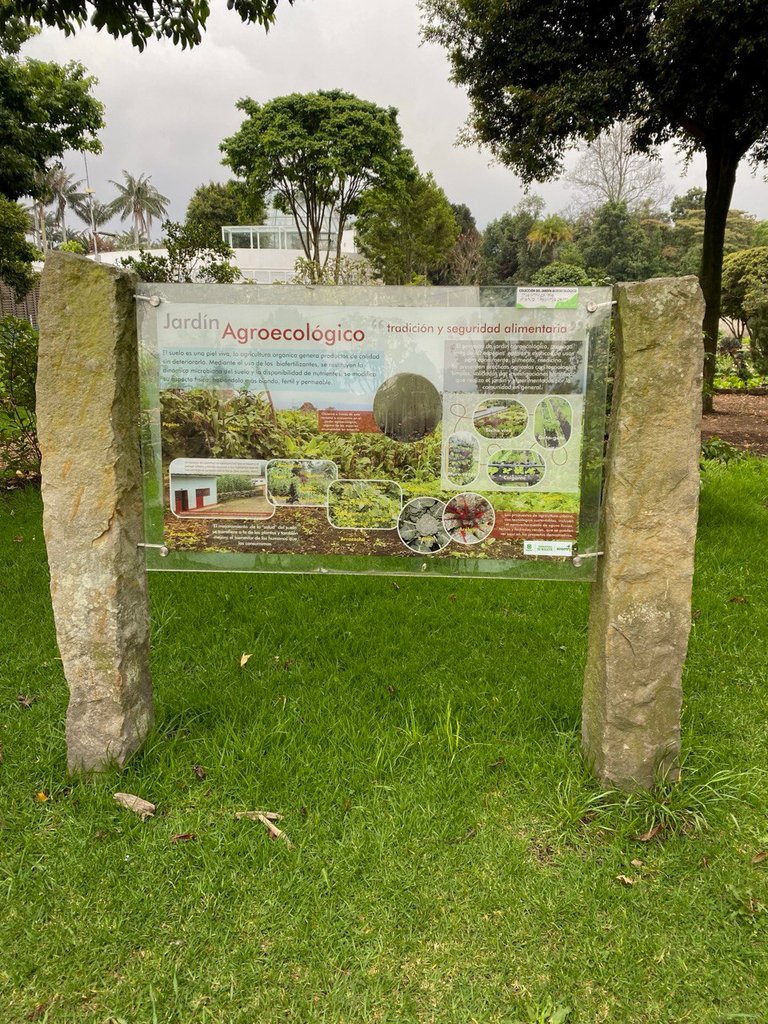
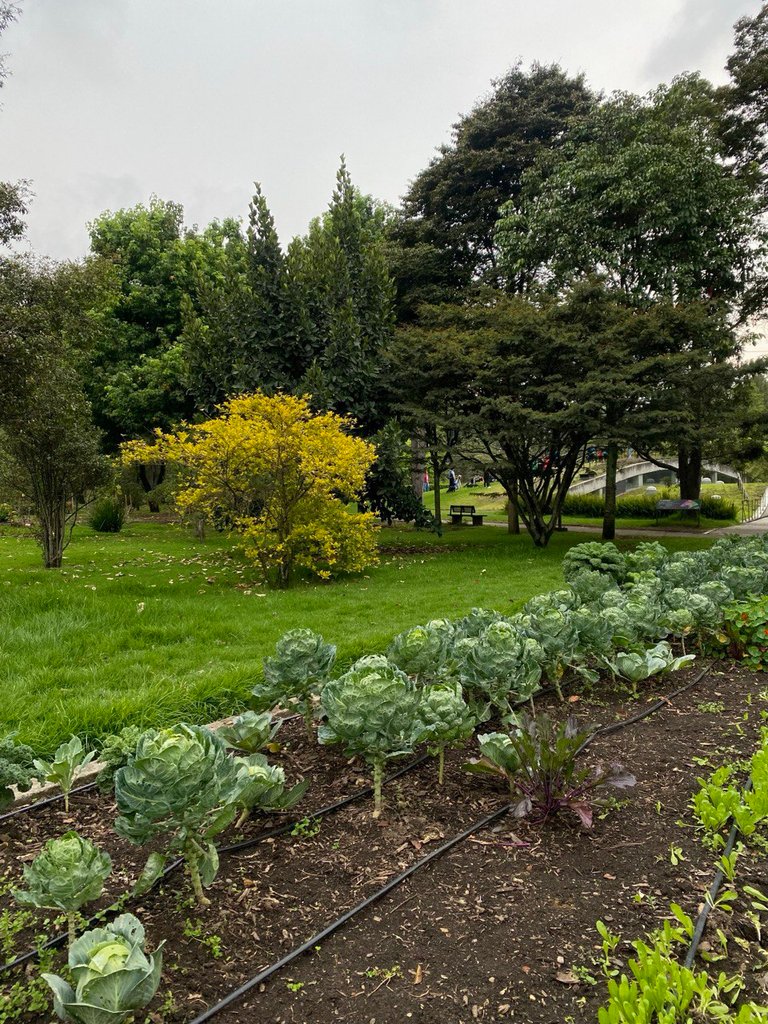
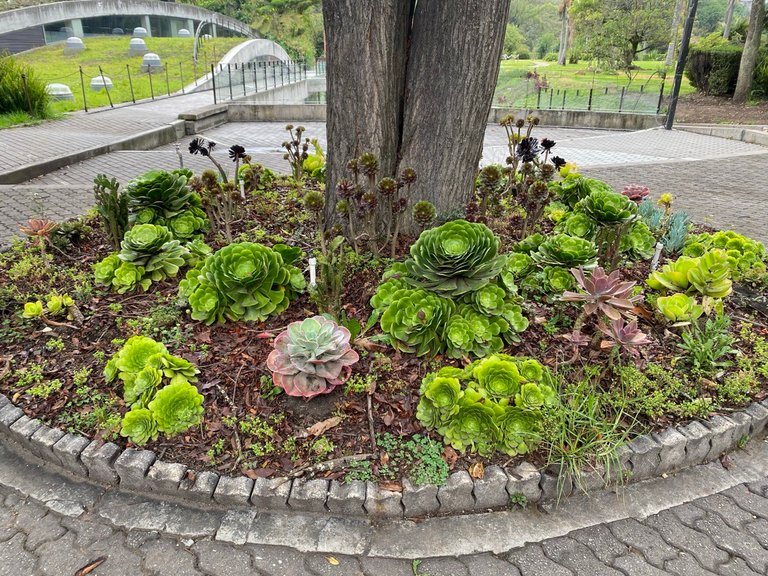
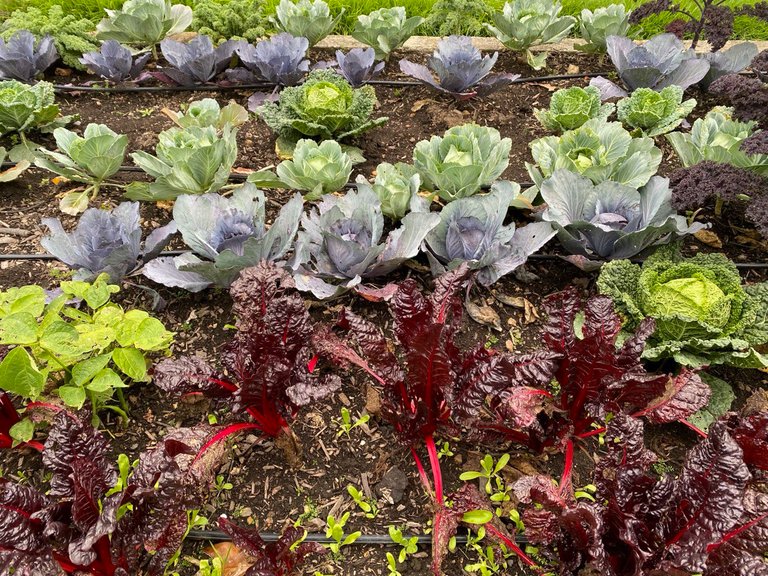
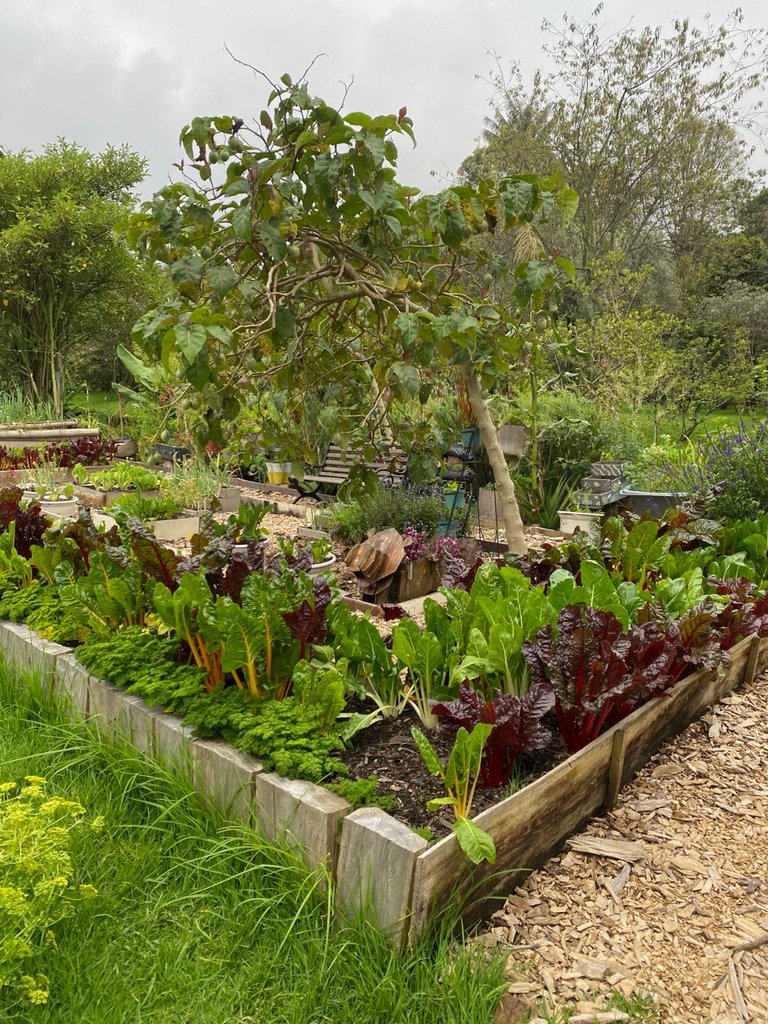
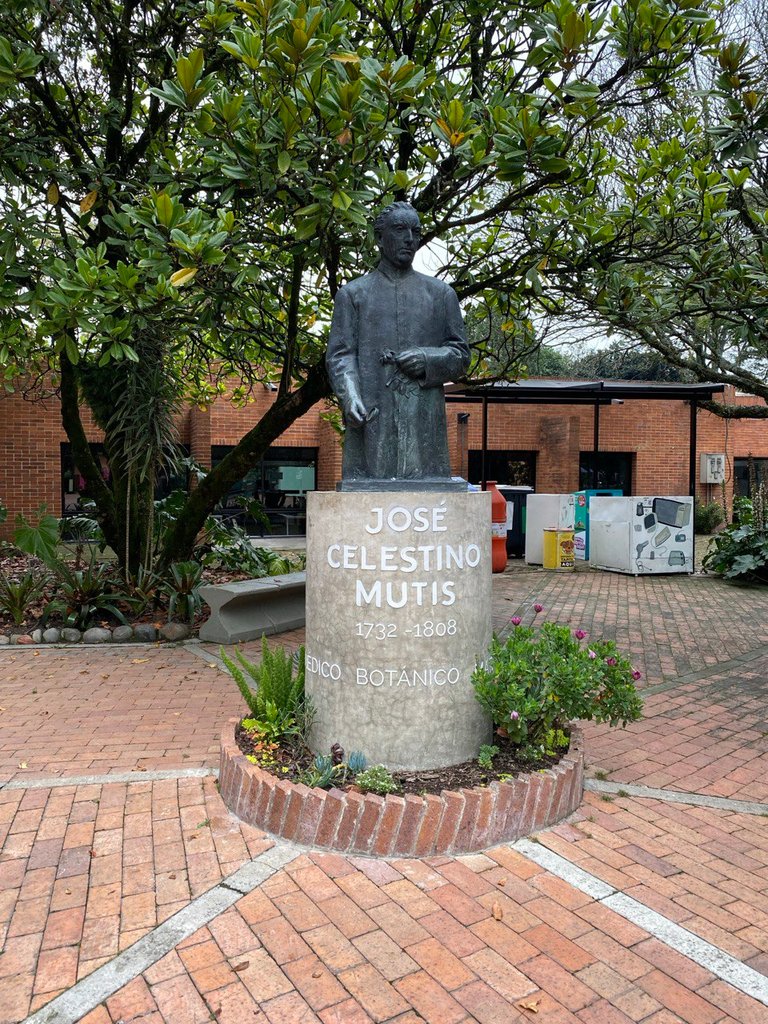

Sin duda, este lugar es ideal para conectar con la naturaleza, relajarse, aprender y admirar la belleza de la biodiversidad Colombiana, aunque es un espacio bastante grande por recorrer creo que vale completamente la pena. Sin más, por aquí les comparto las últimas fotos que pude capturar en el lugar, espero que les haya gustado leer sobre esta experiencia y si tienen la oportunidad de visitar el Jardín botánico en Bogotá no la desaprovechen. Nos leemos en una próxima aventura, un abrazo ❤️
Undoubtedly, this place is ideal to connect with nature, relax, learn and admire the beauty of Colombian biodiversity, although it is quite a large space to go through I think it is completely worth it. I hope you enjoyed reading about this experience and if you have the opportunity to visit the Botanical Garden in Bogota, don't miss it. See you in a next adventure, a hug ❤️

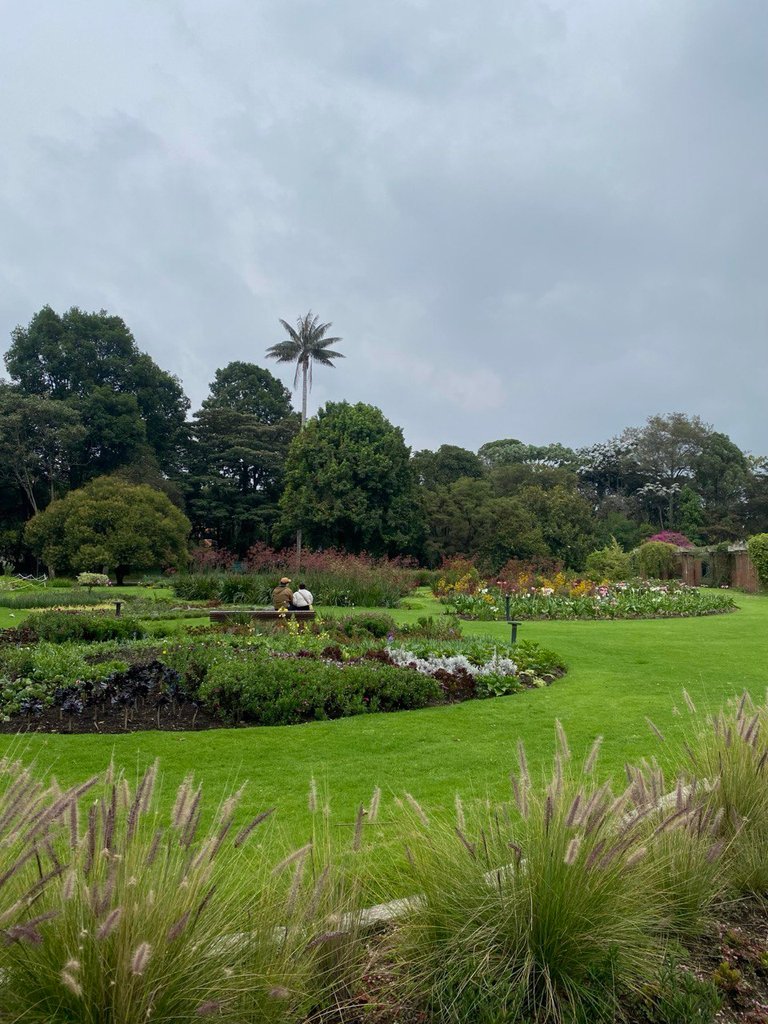
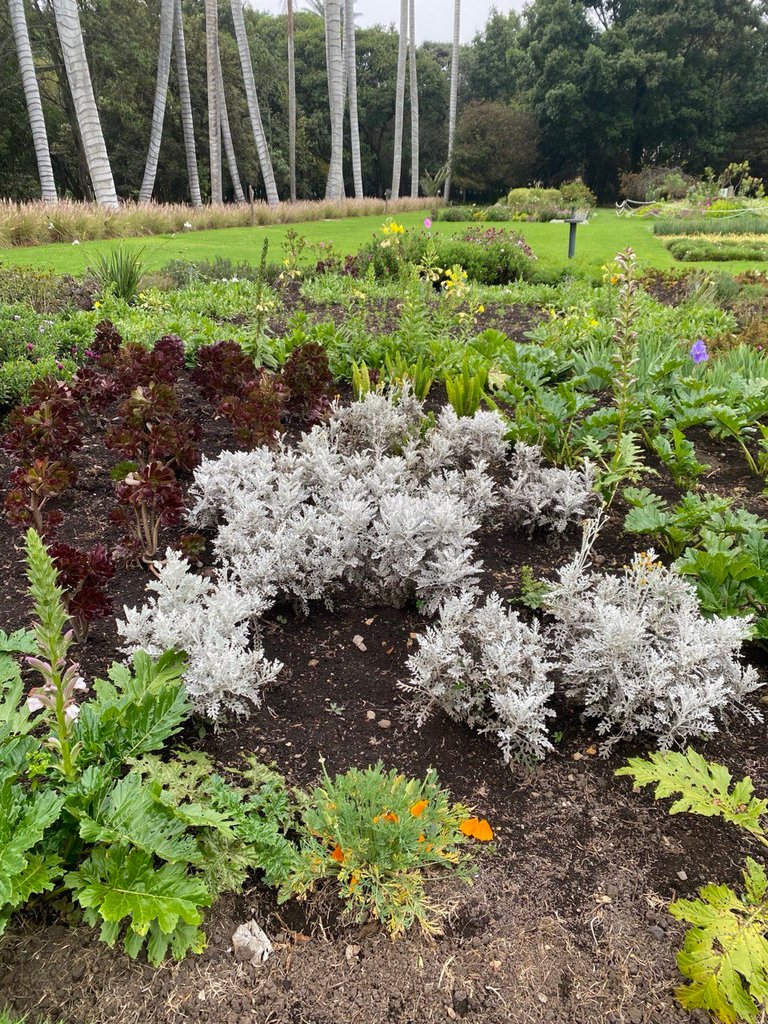
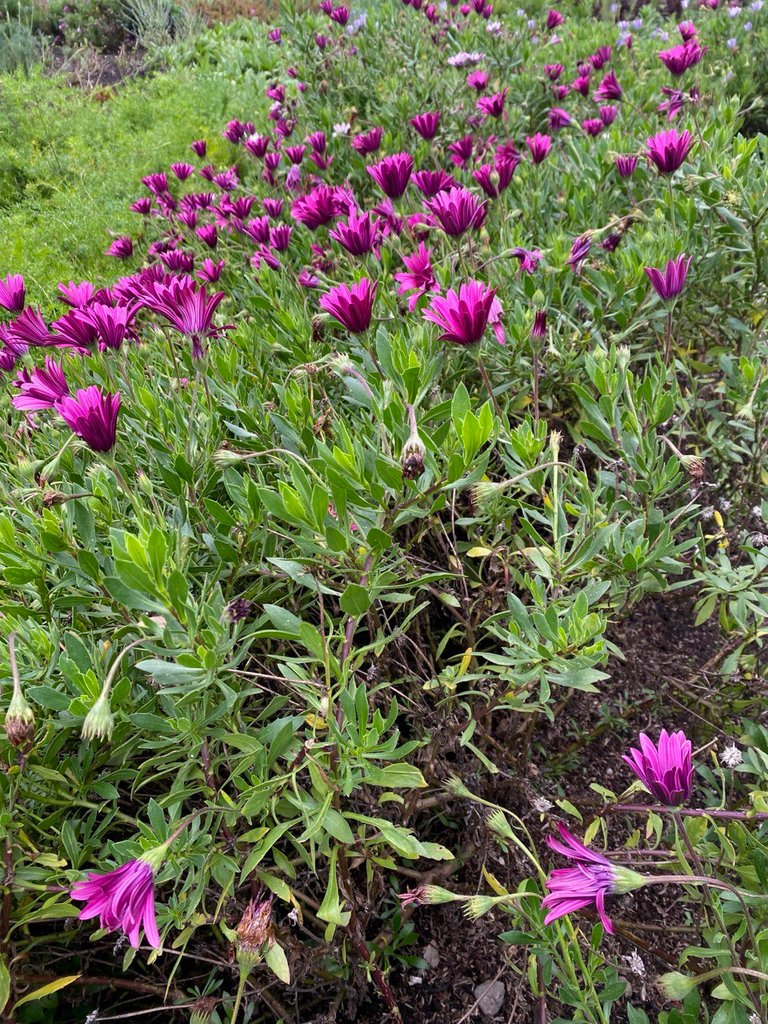
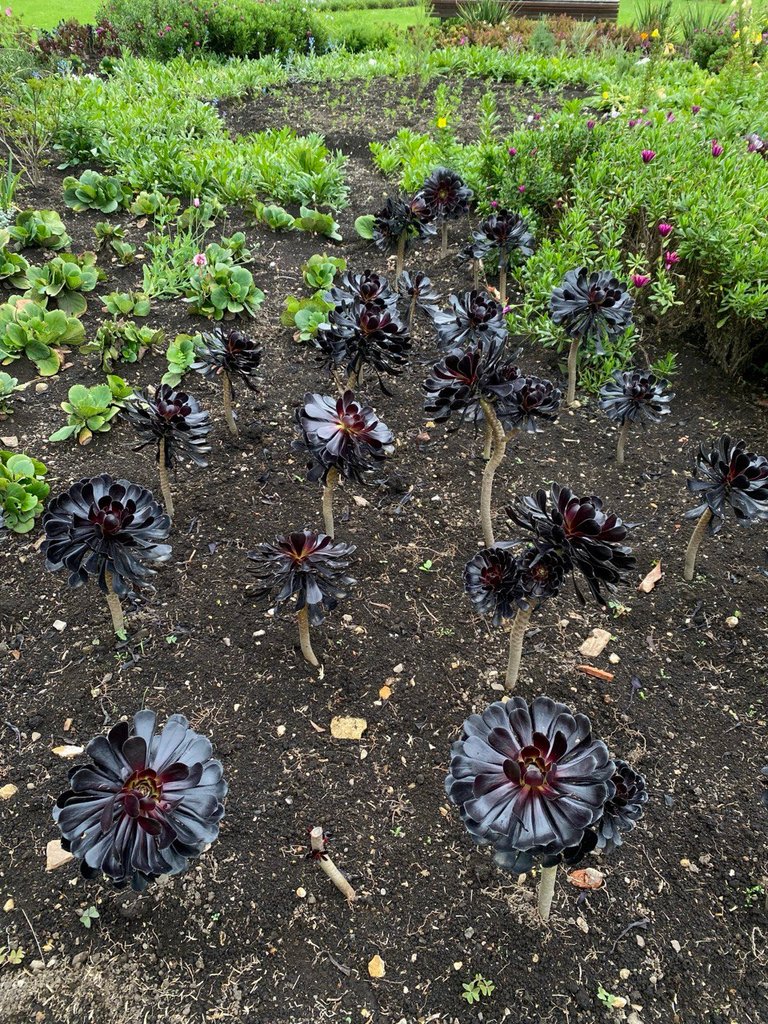
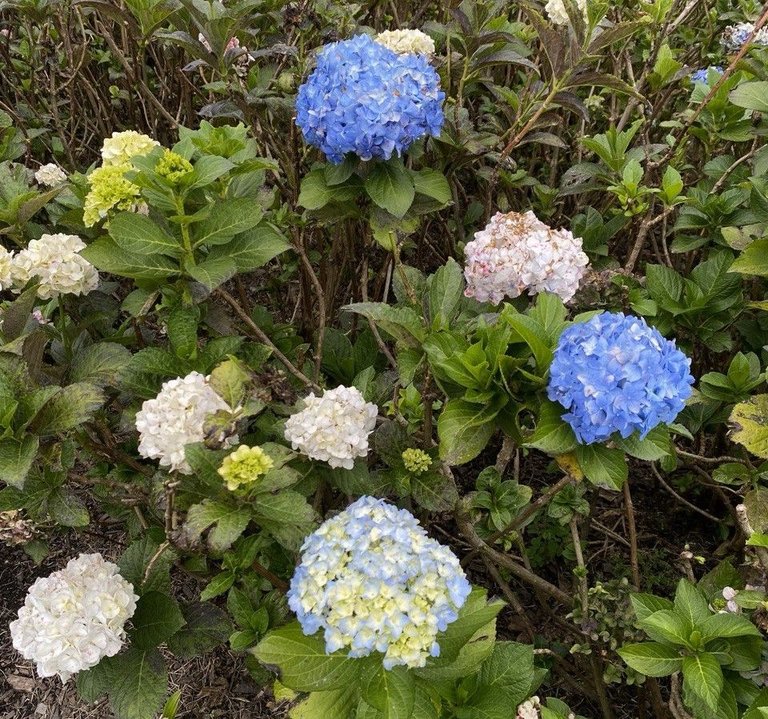
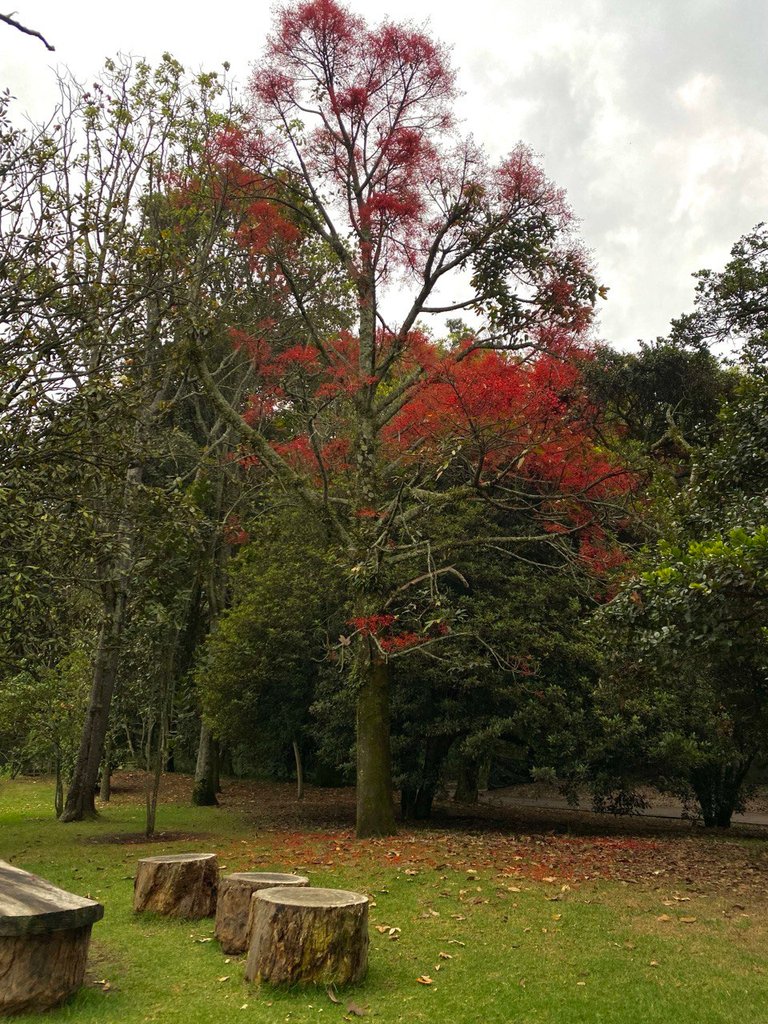
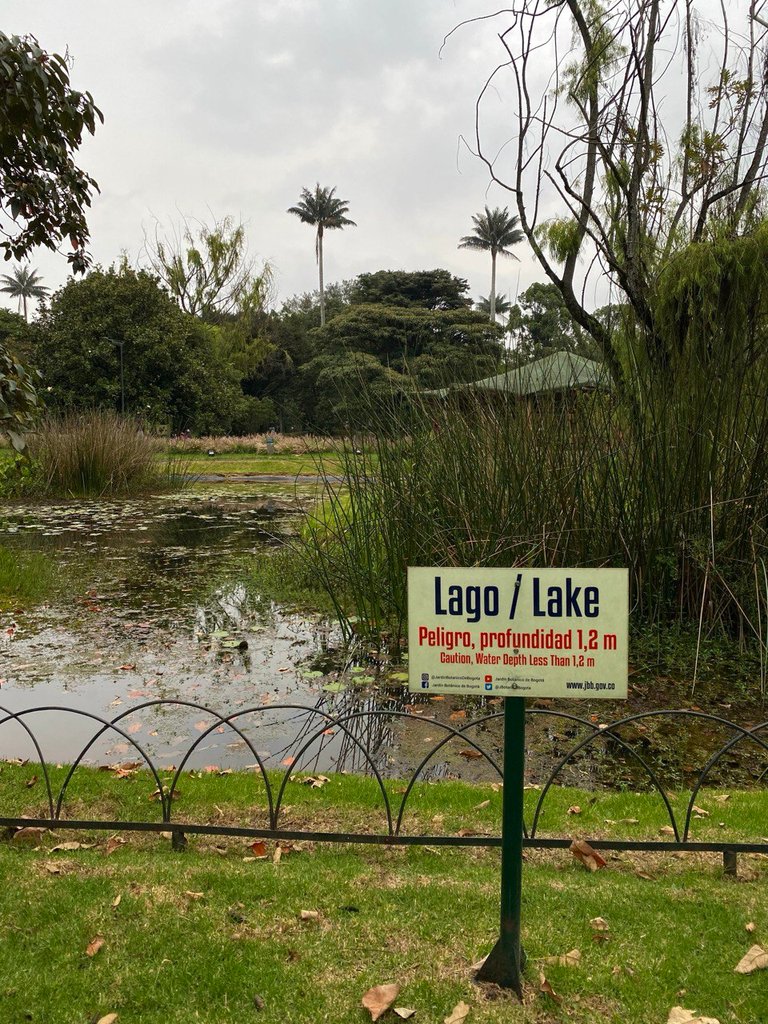

Separador de texto creado por | Text separator
Texto traducido en | Text translated in: Deepl
Imagenes tomadas por mi | Images taken by me

